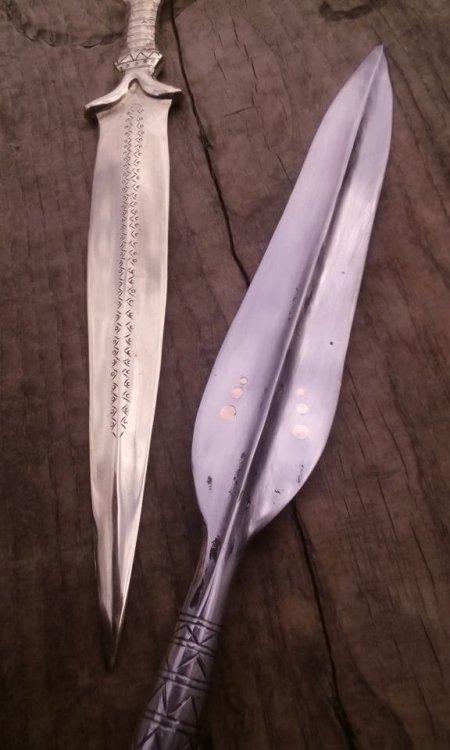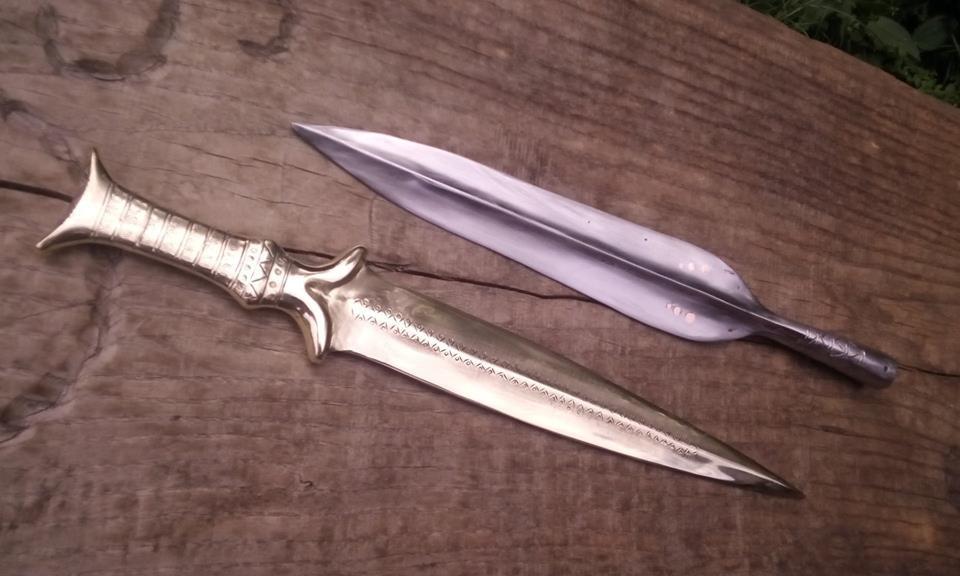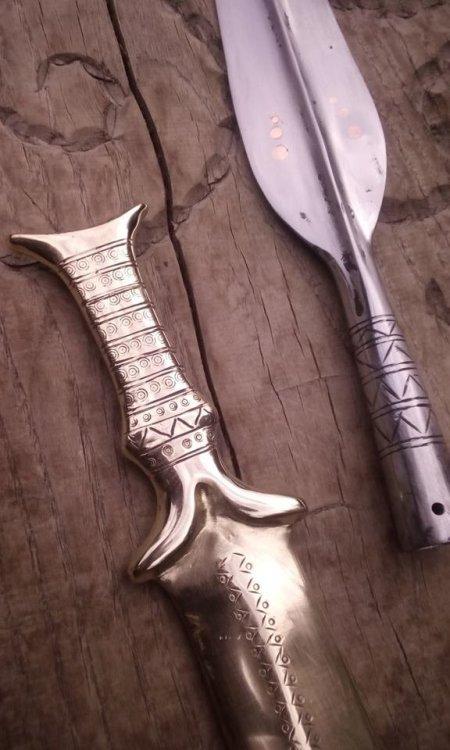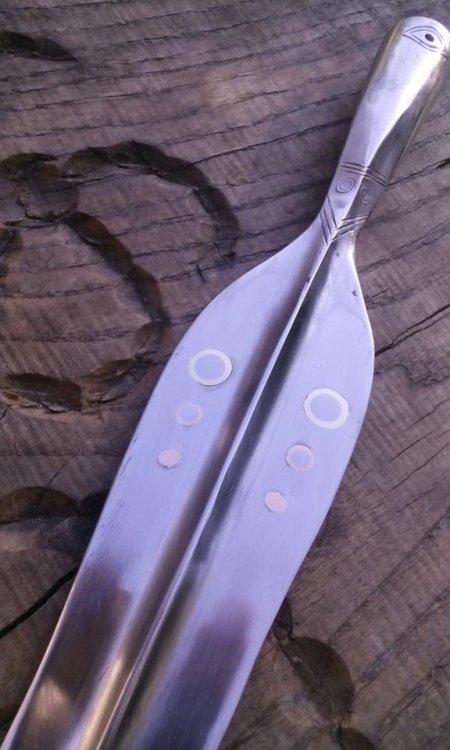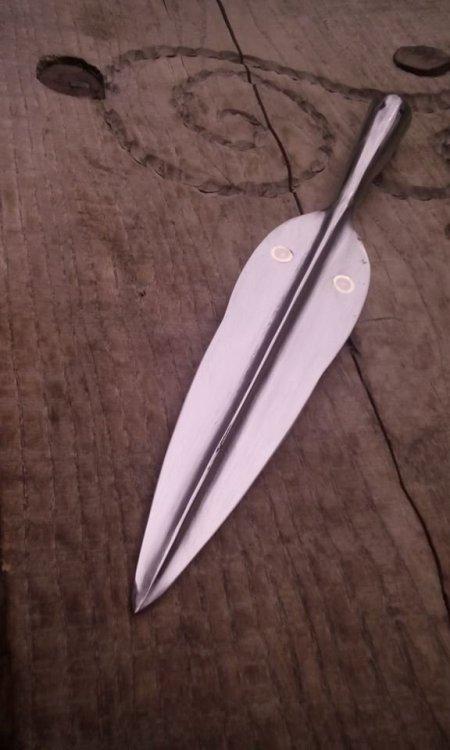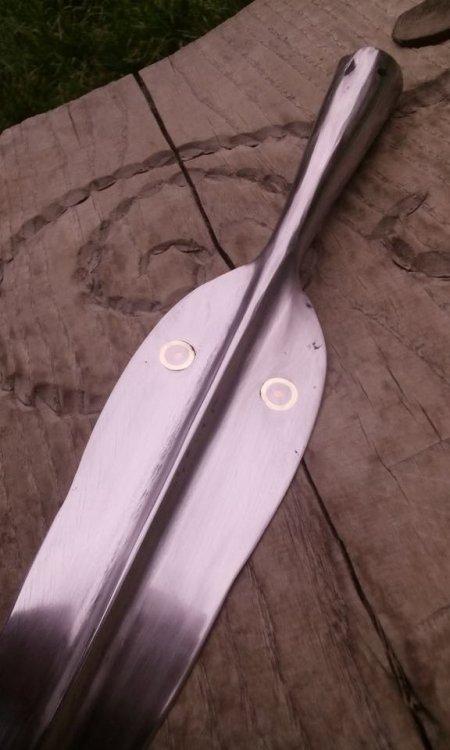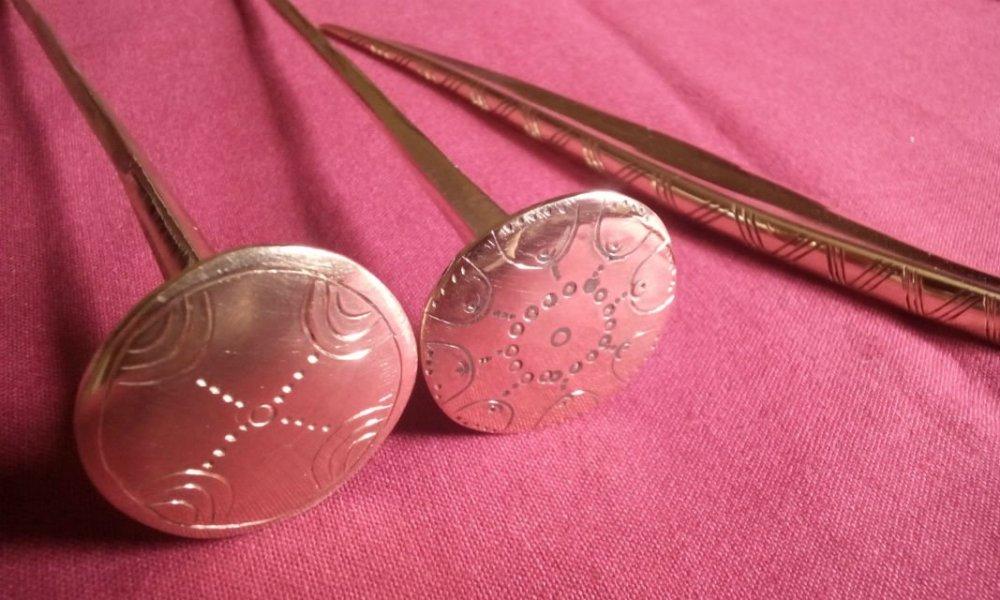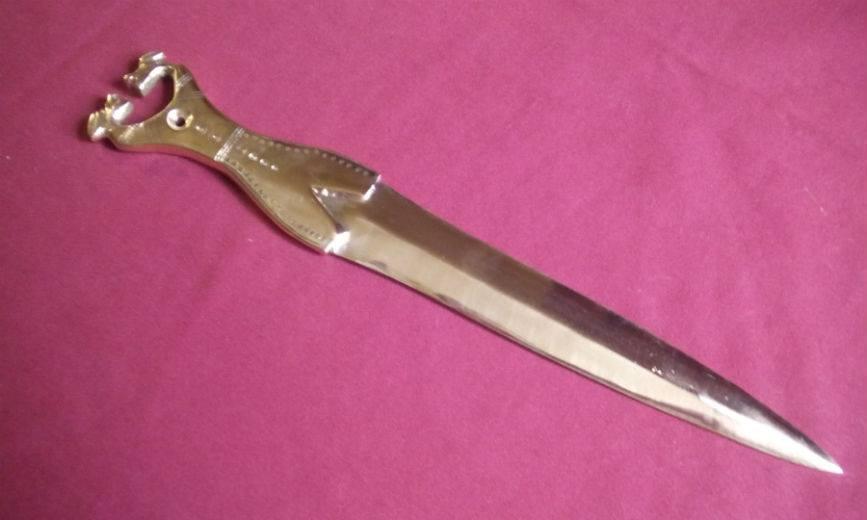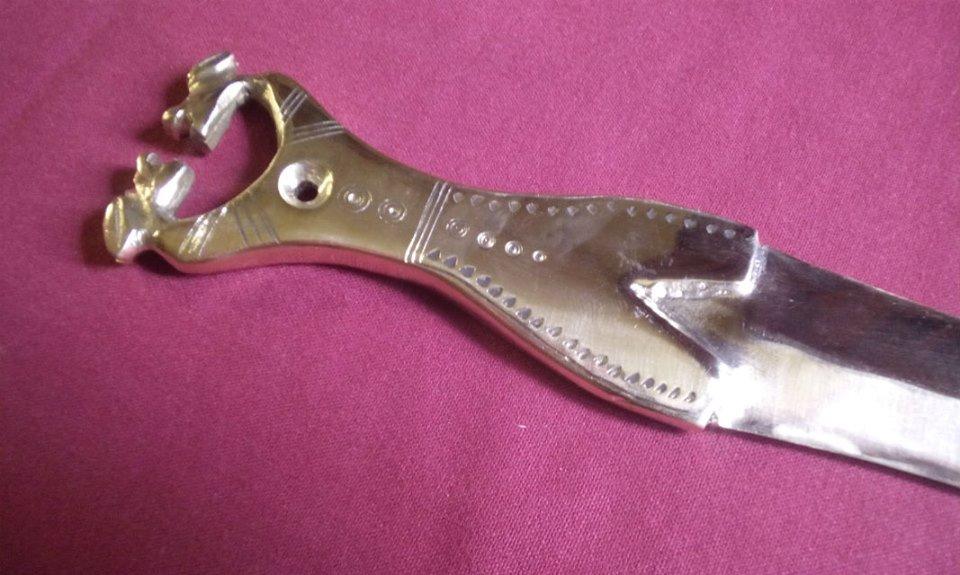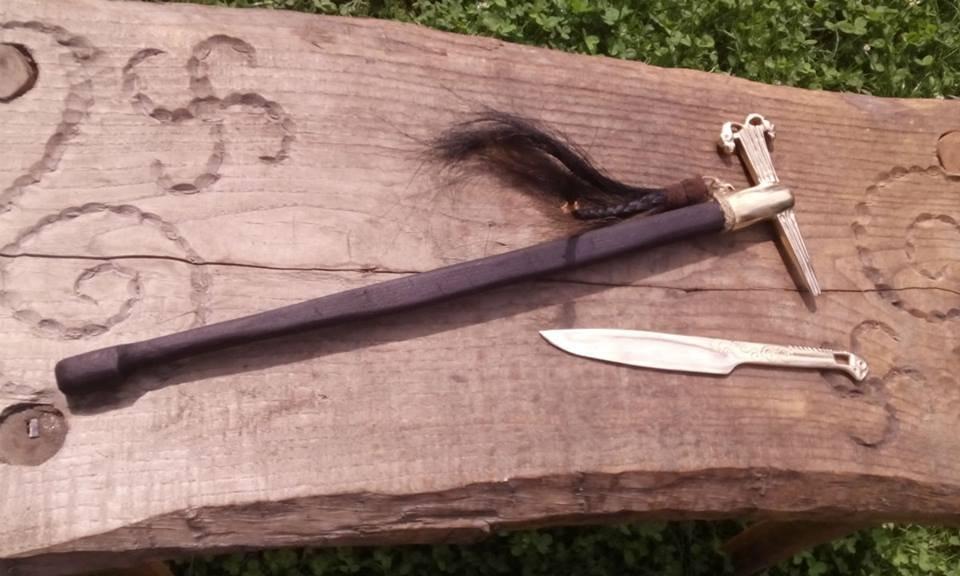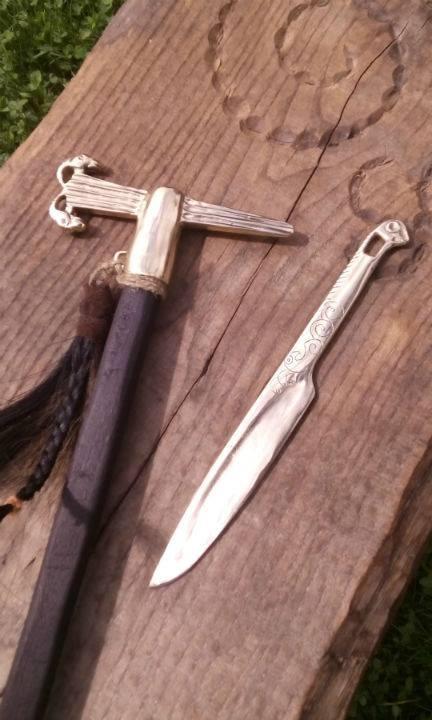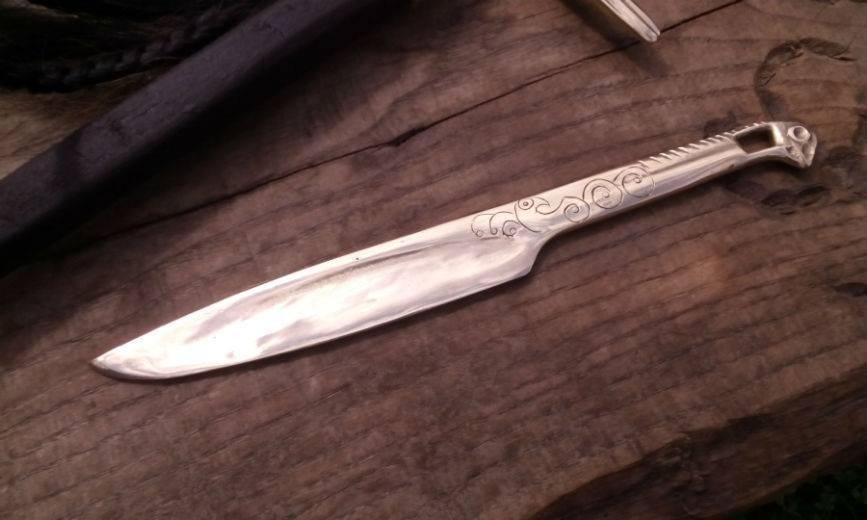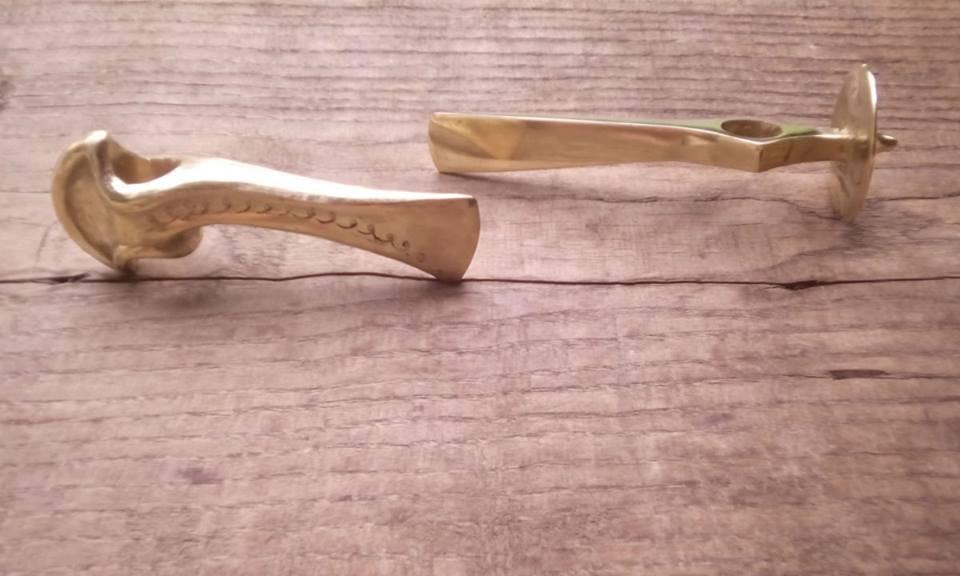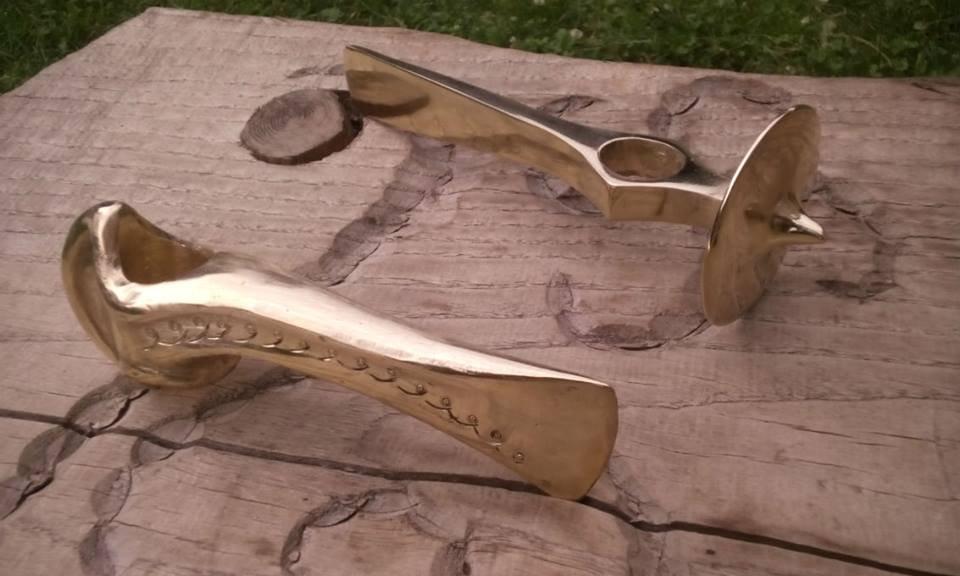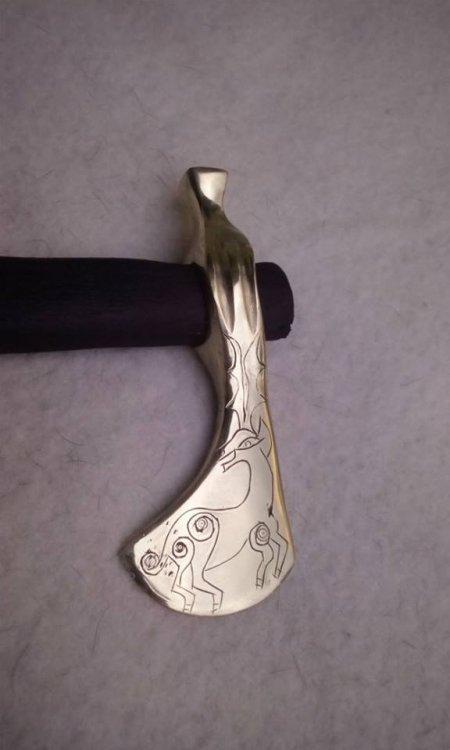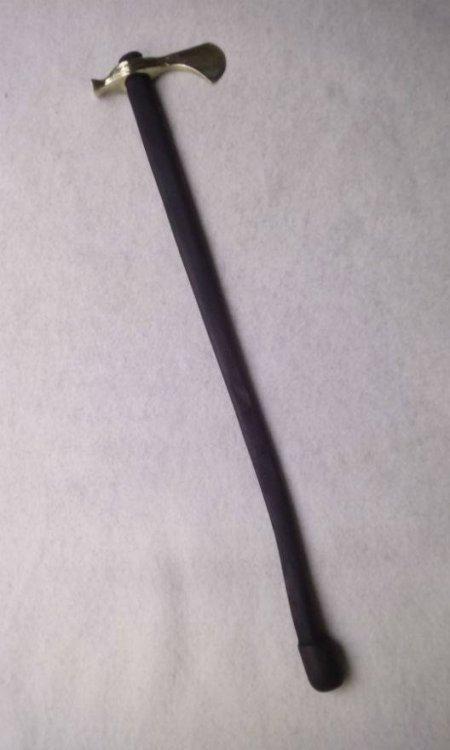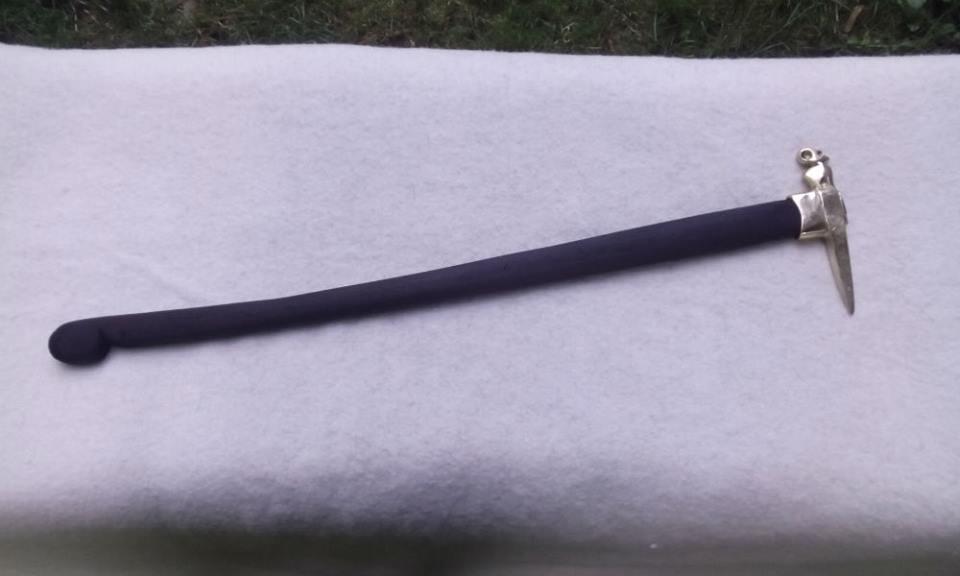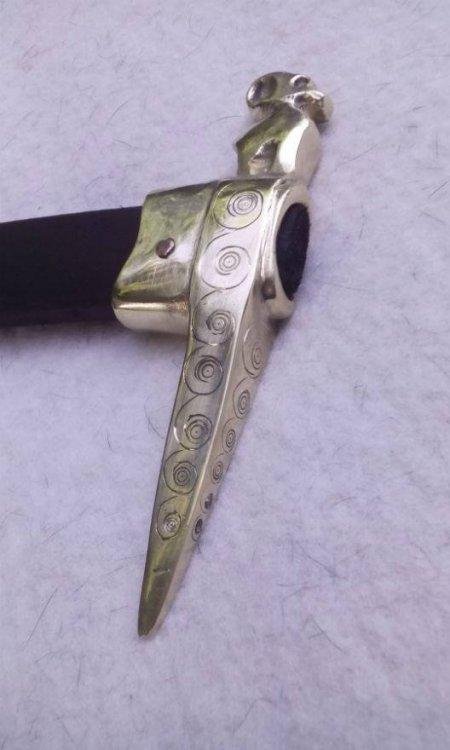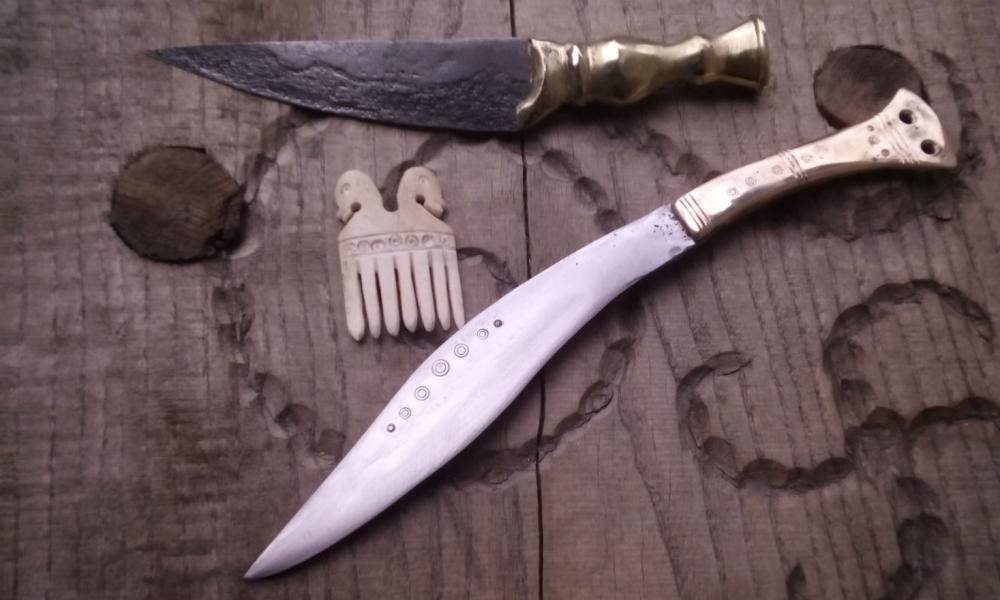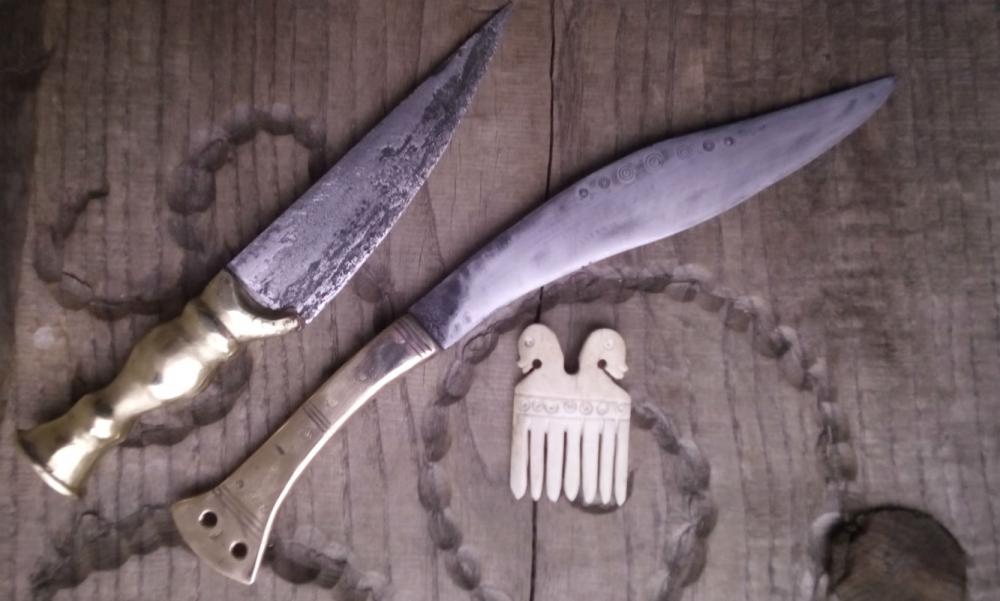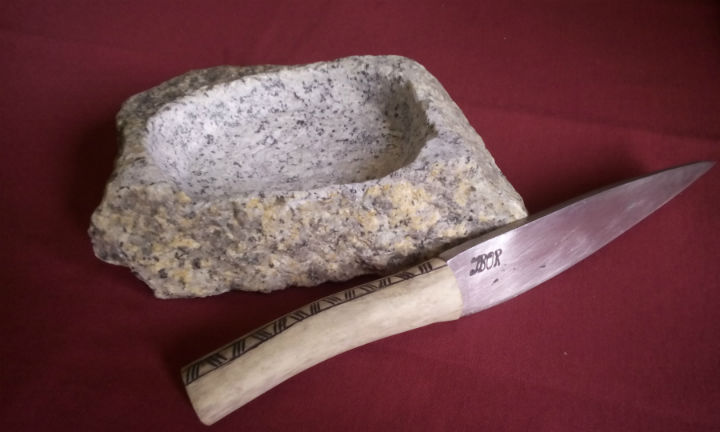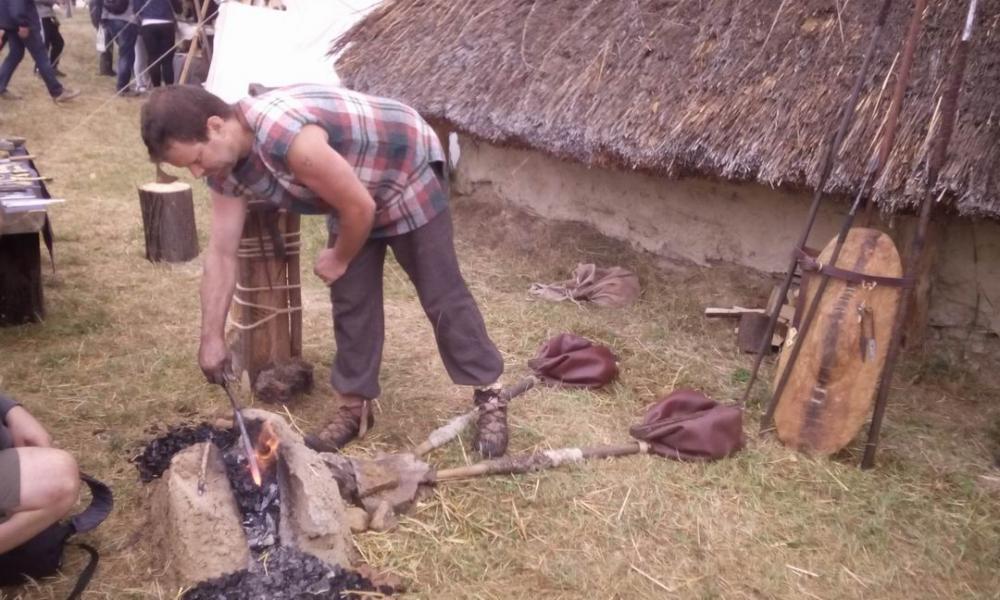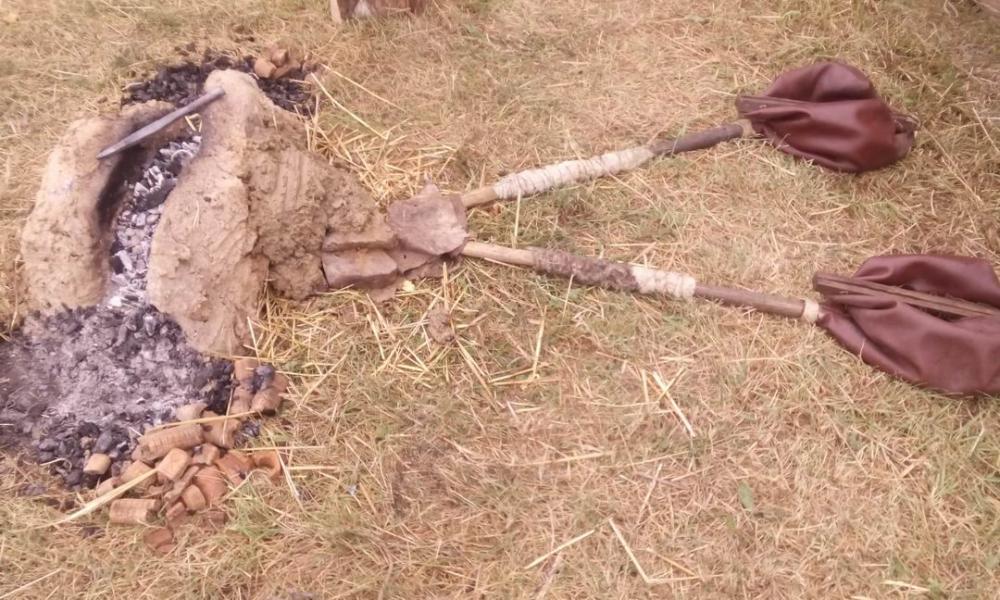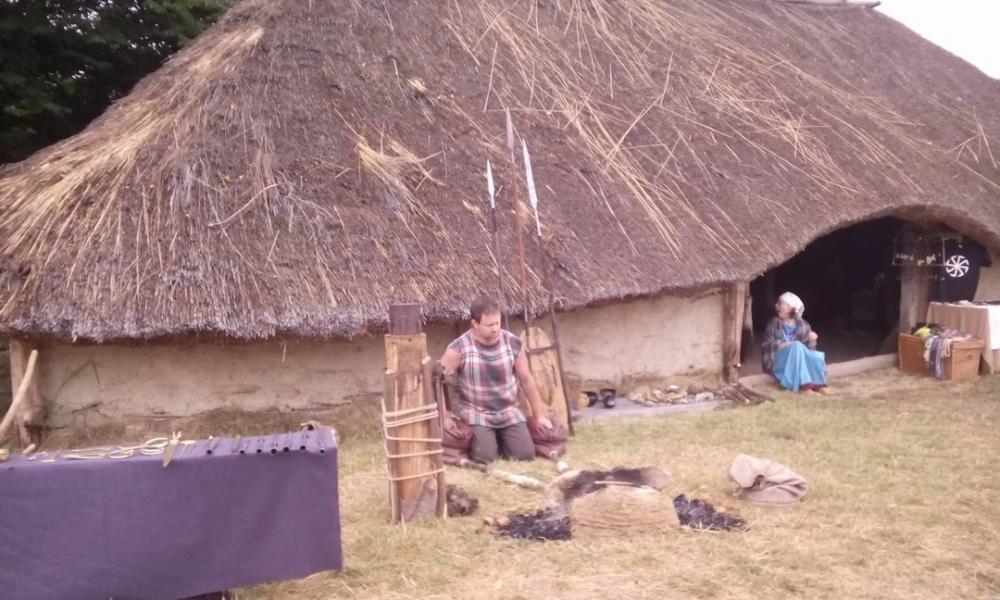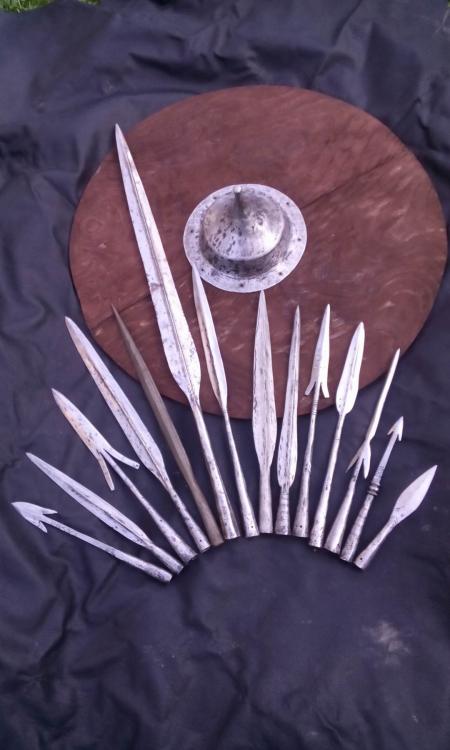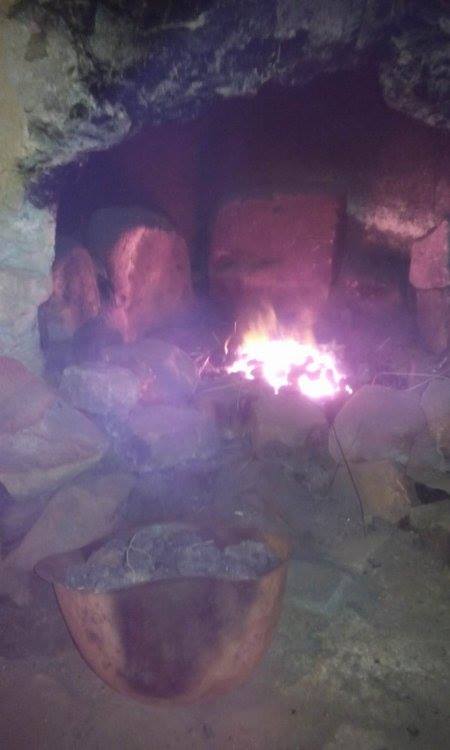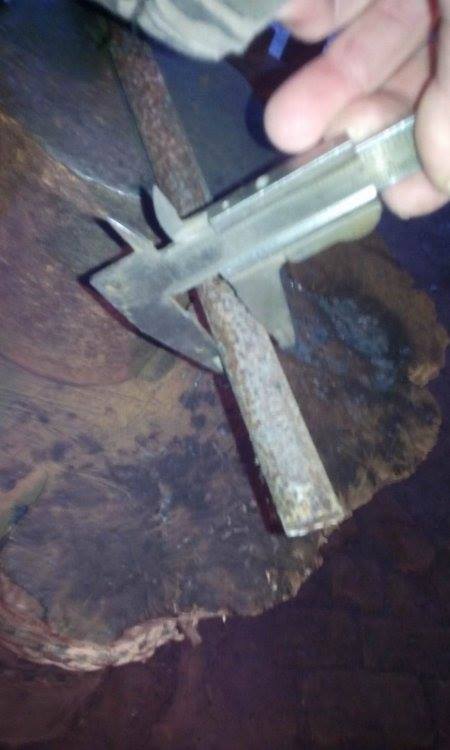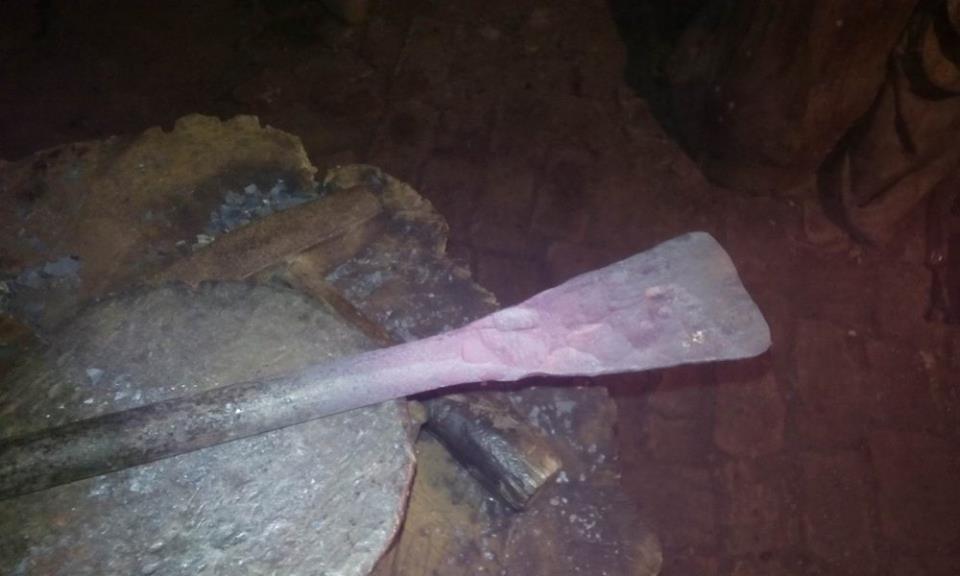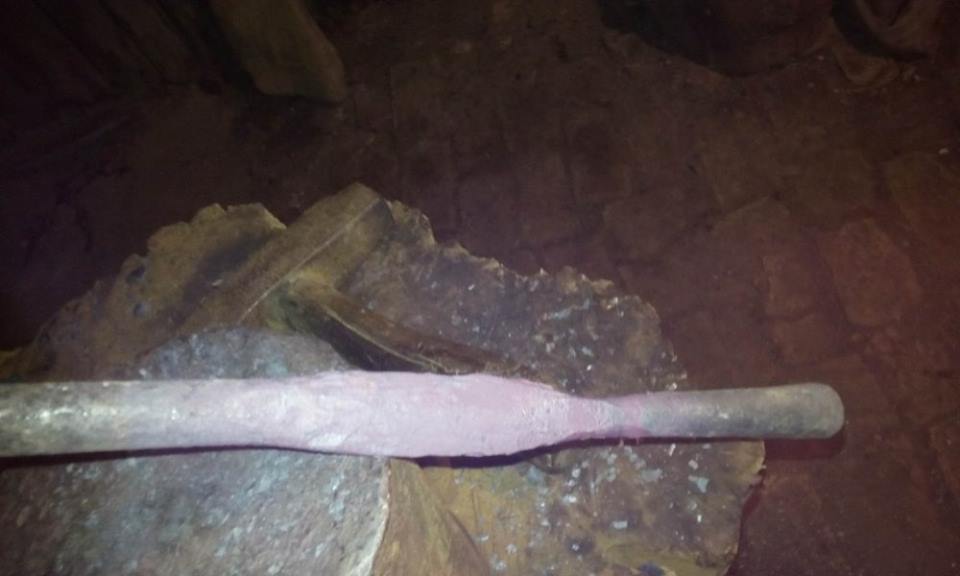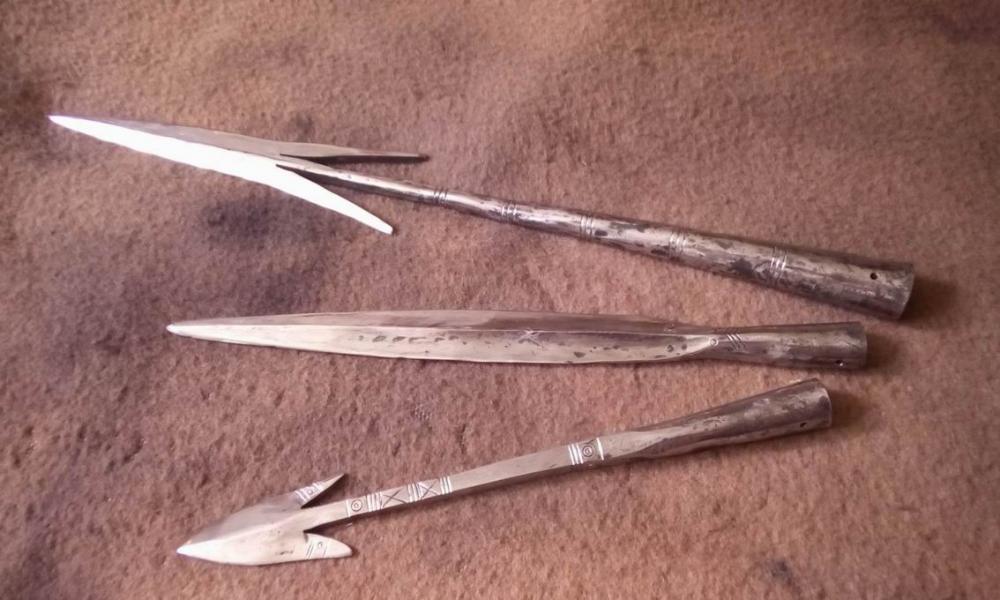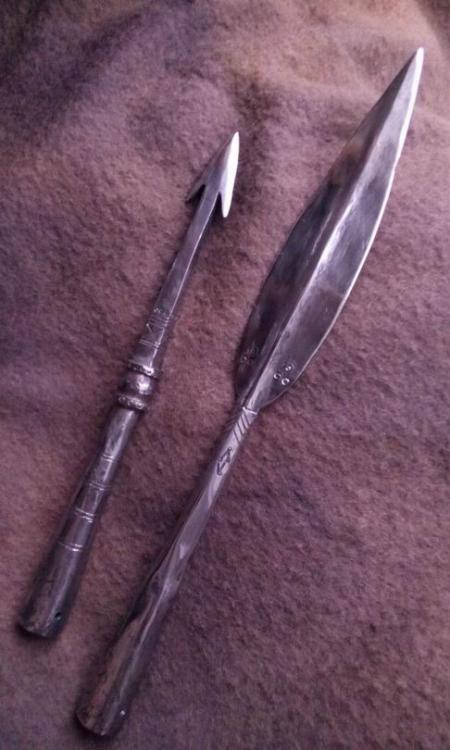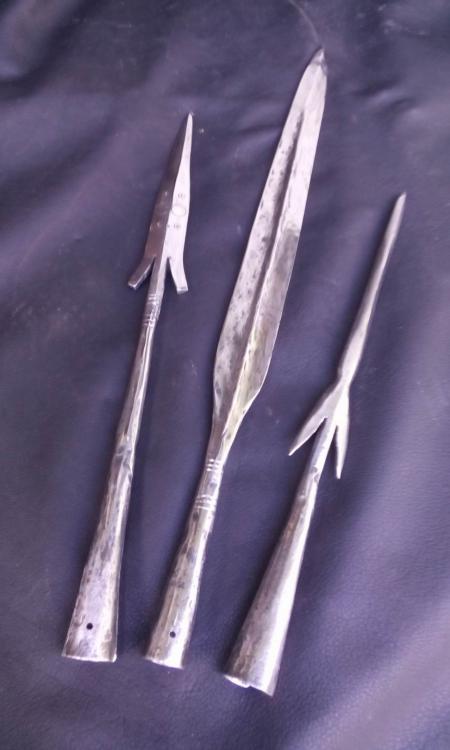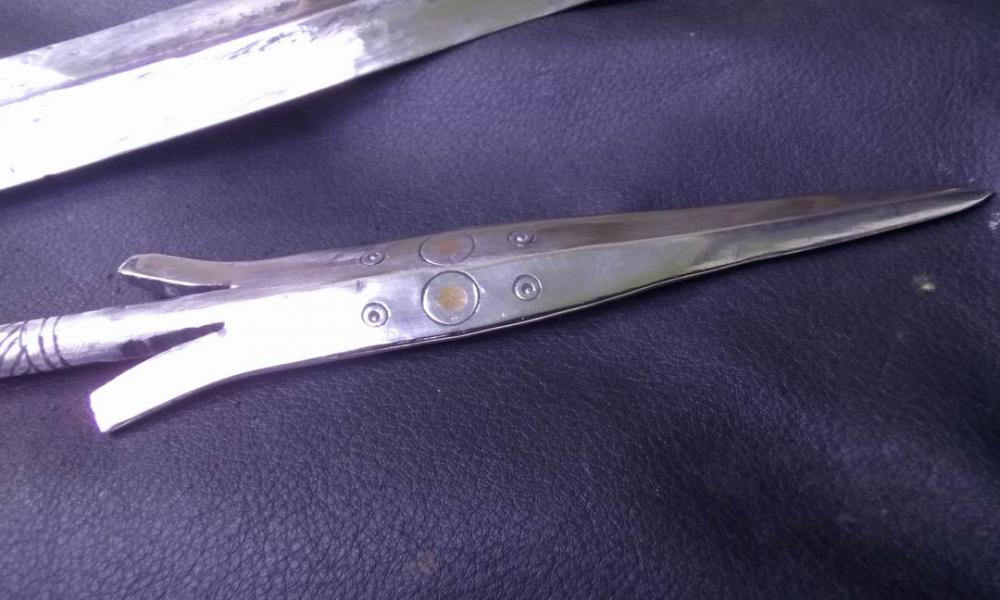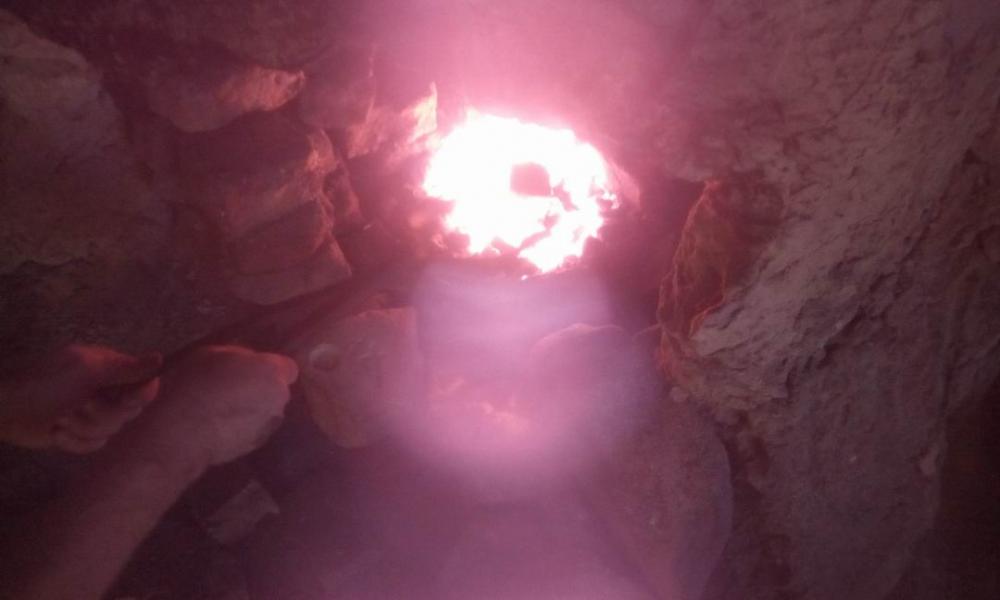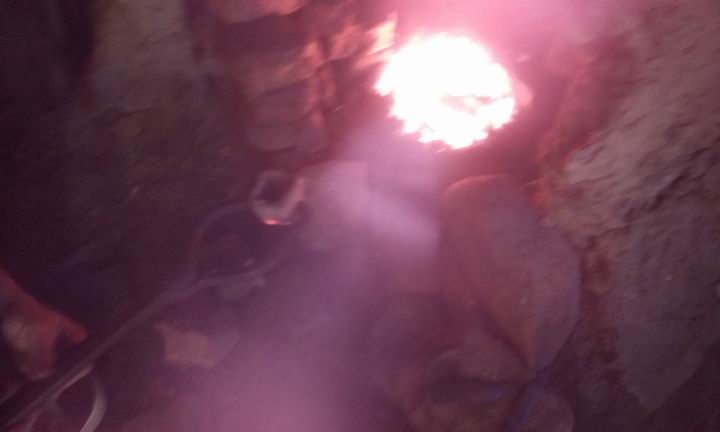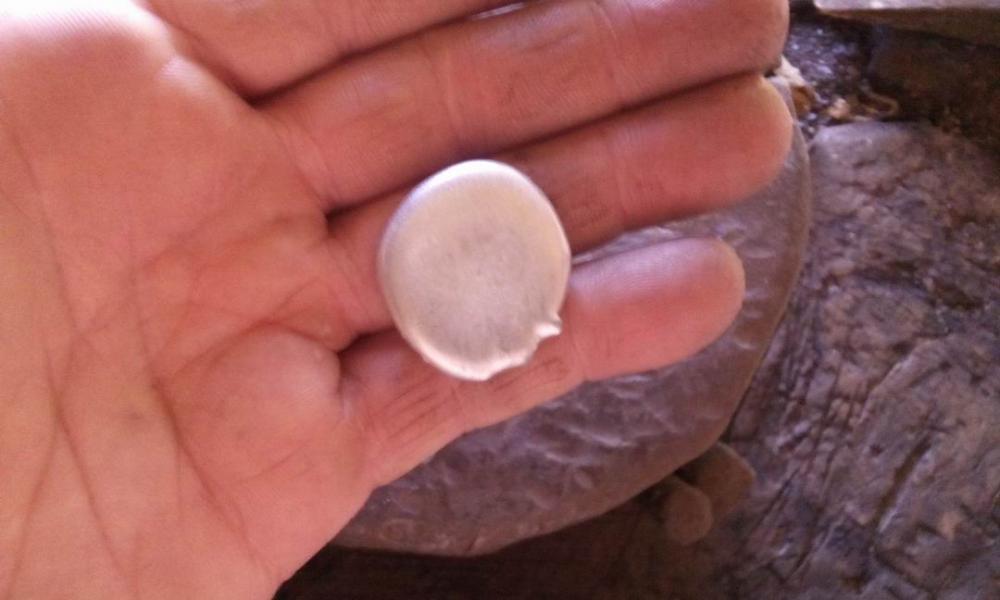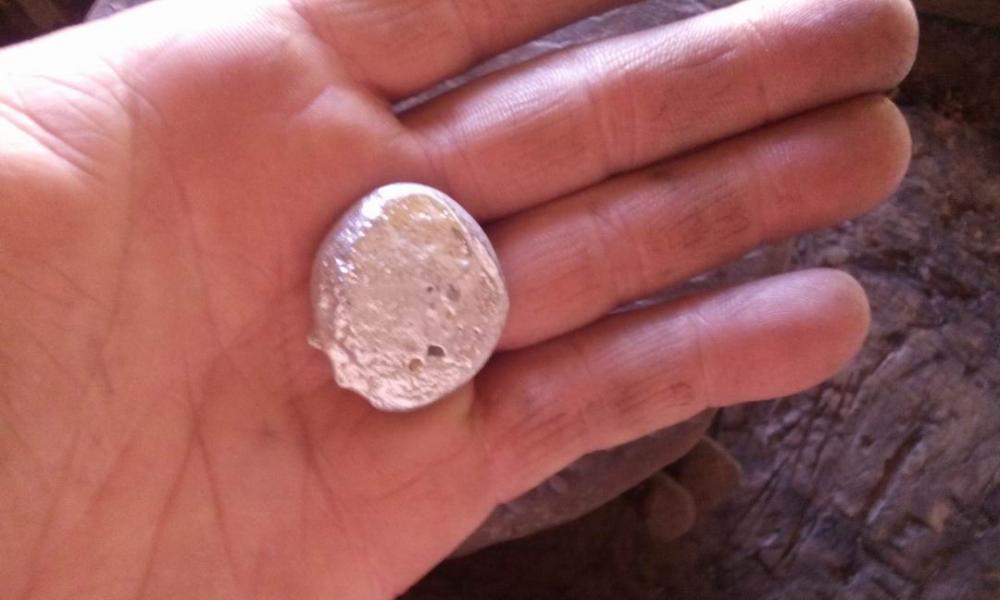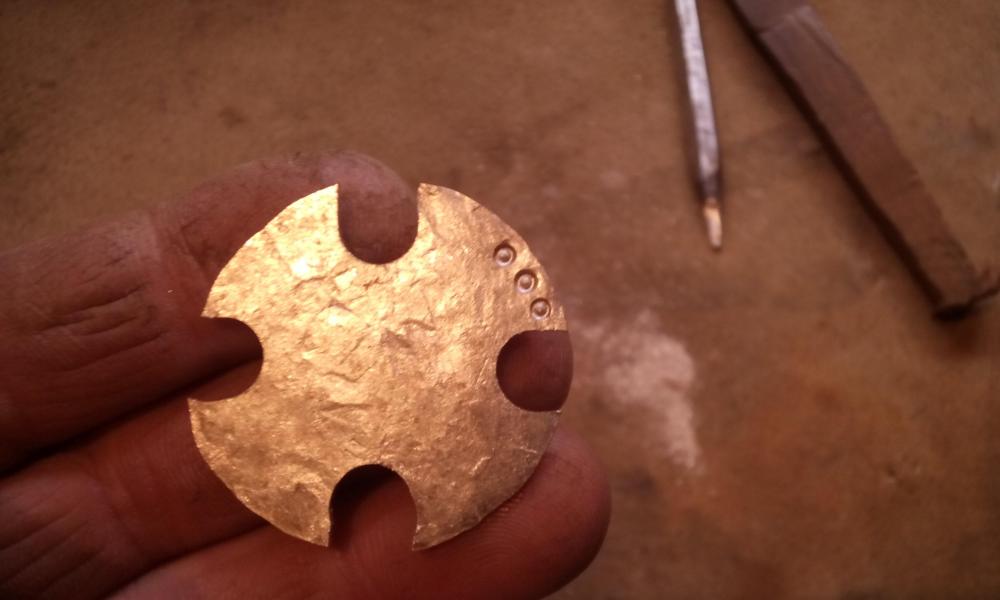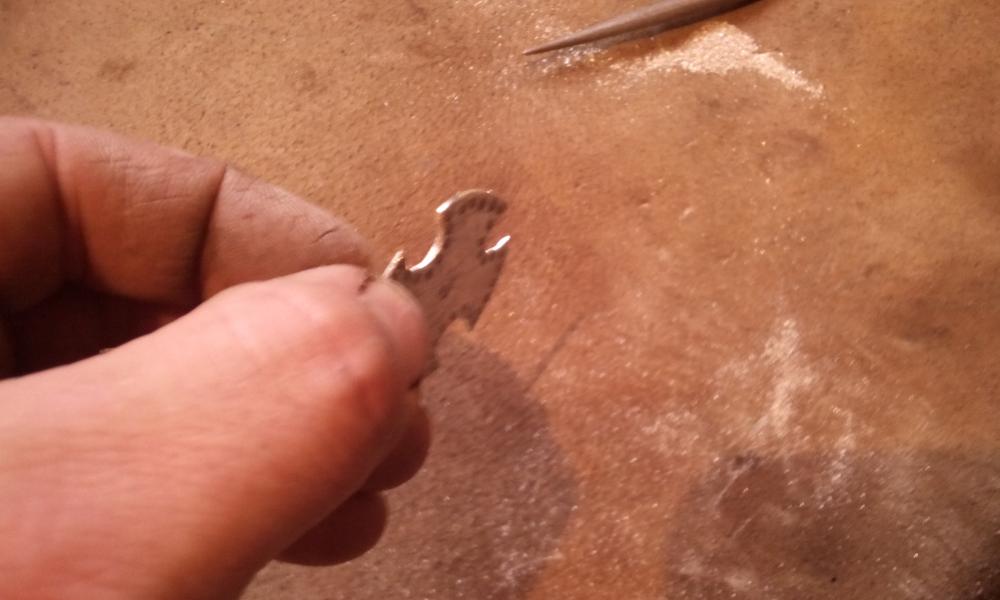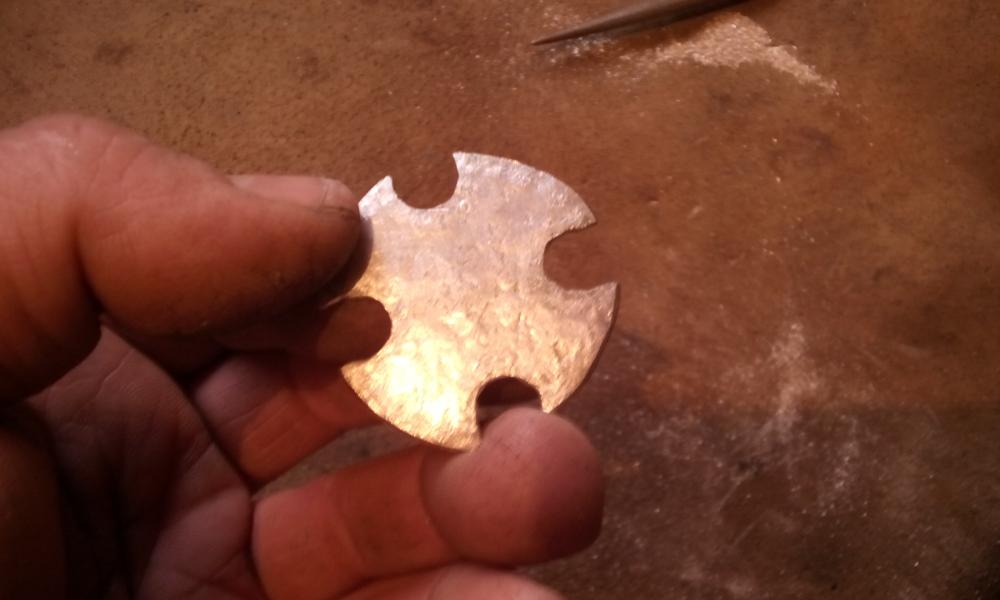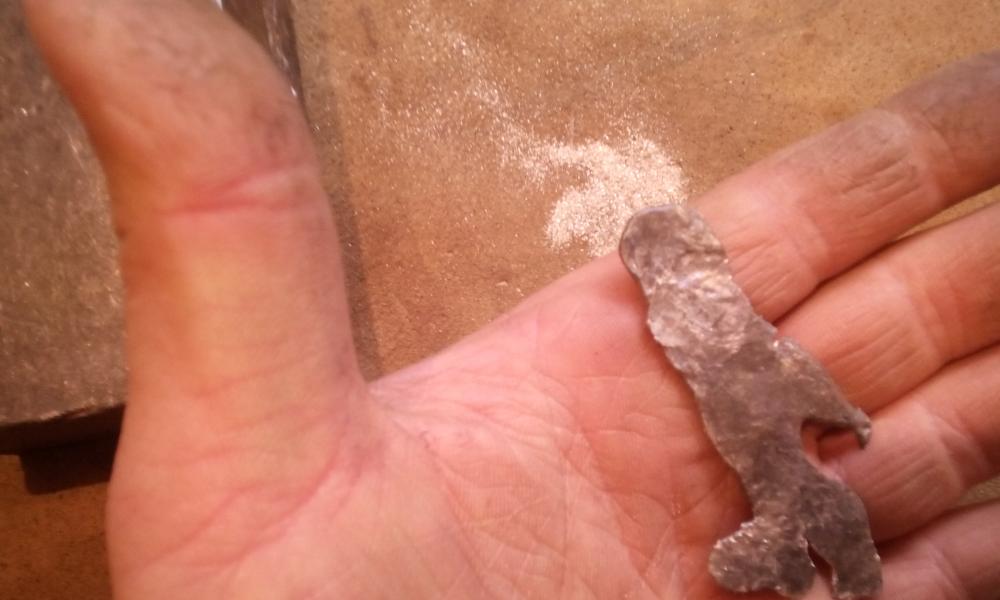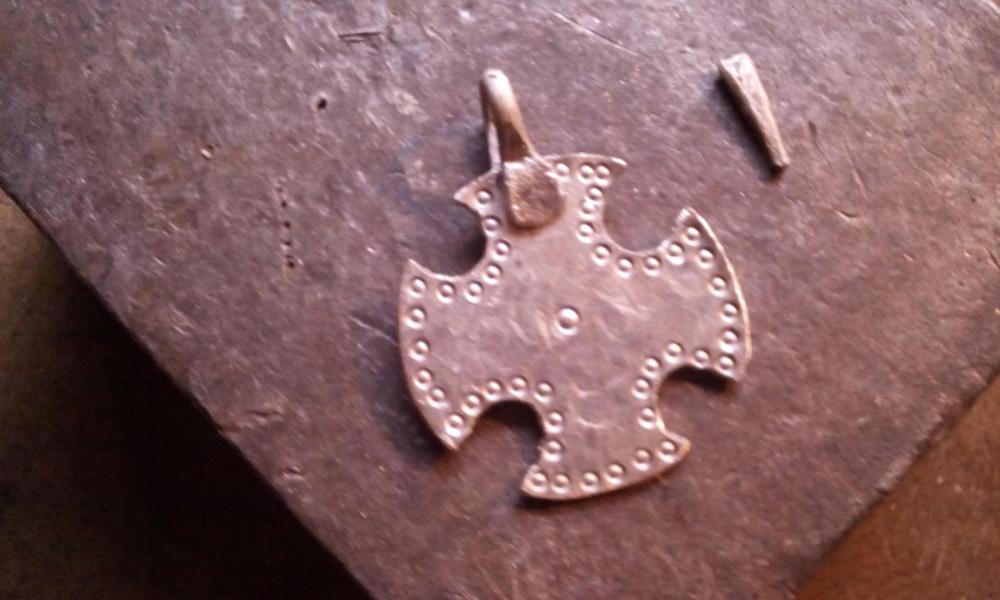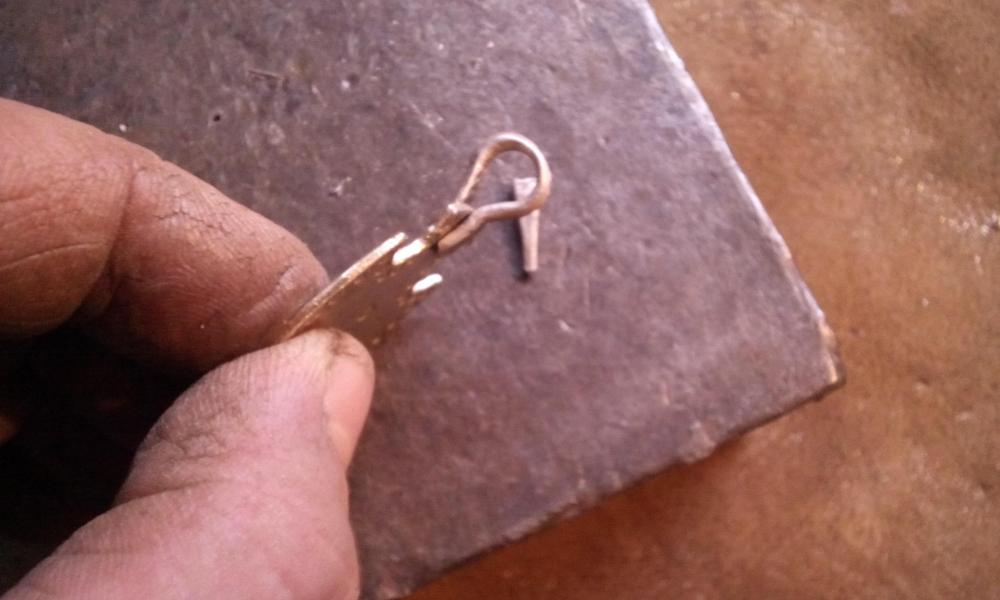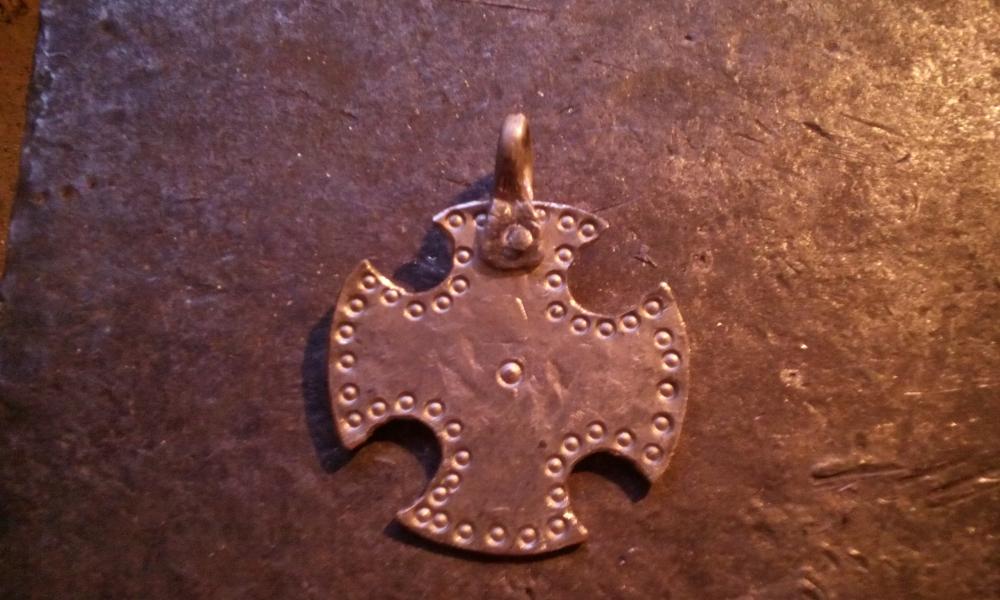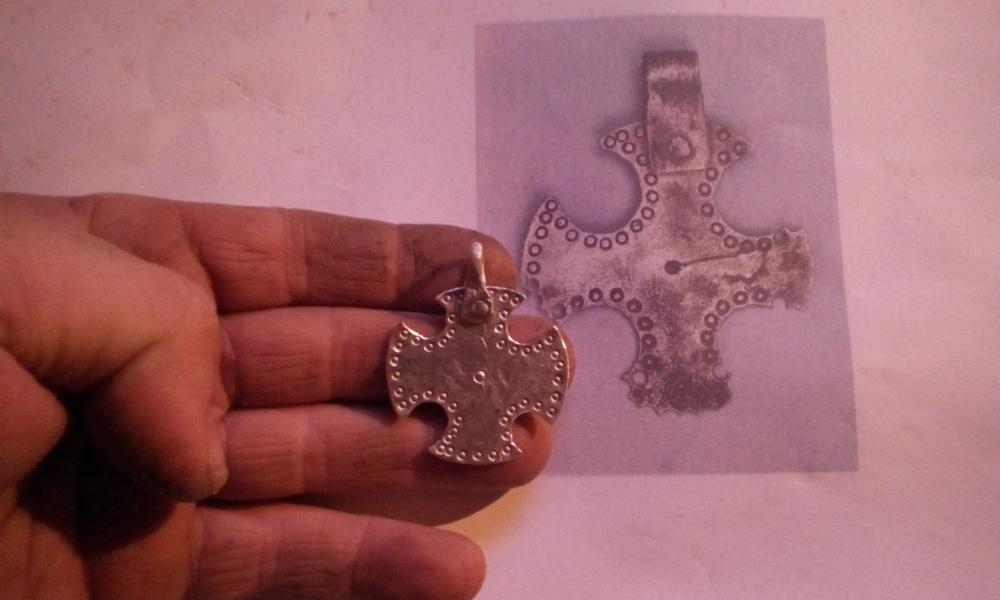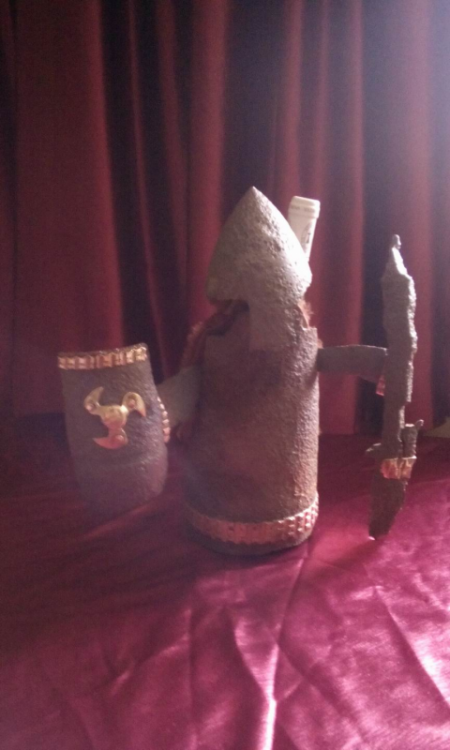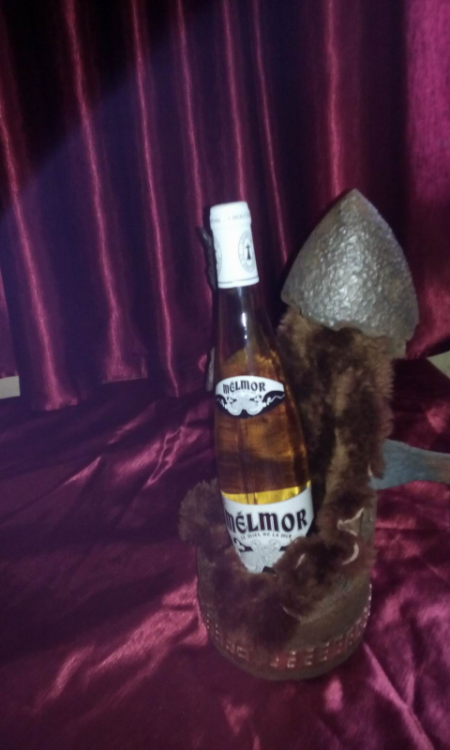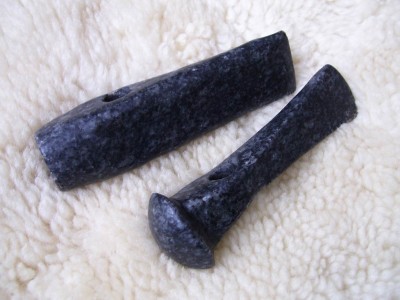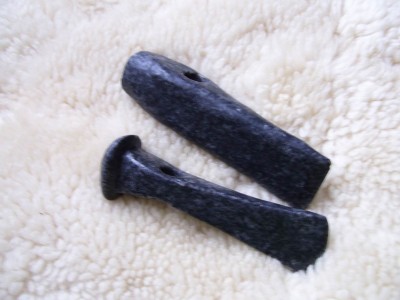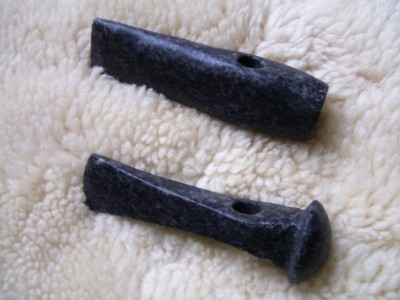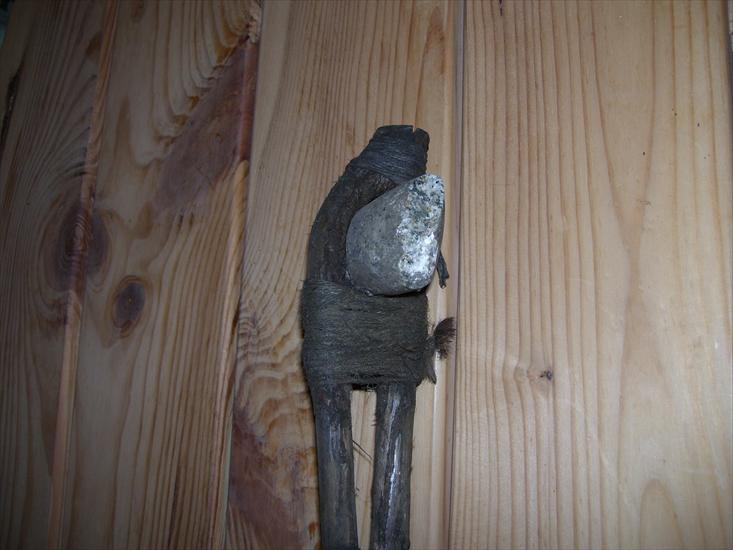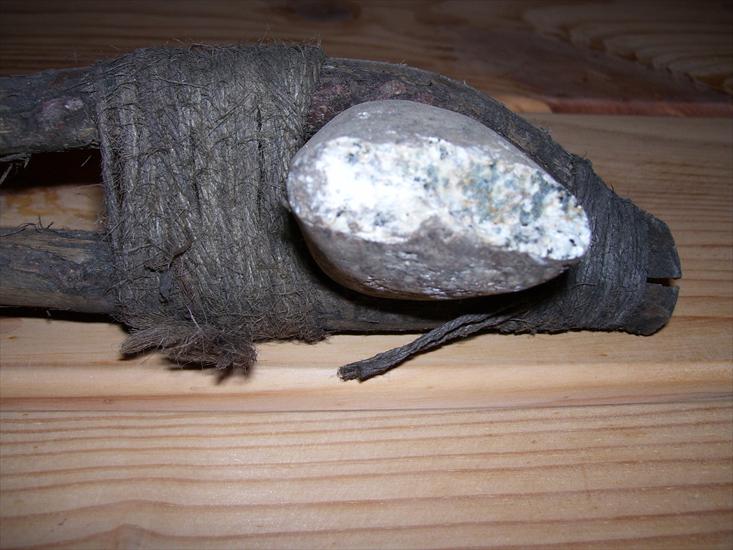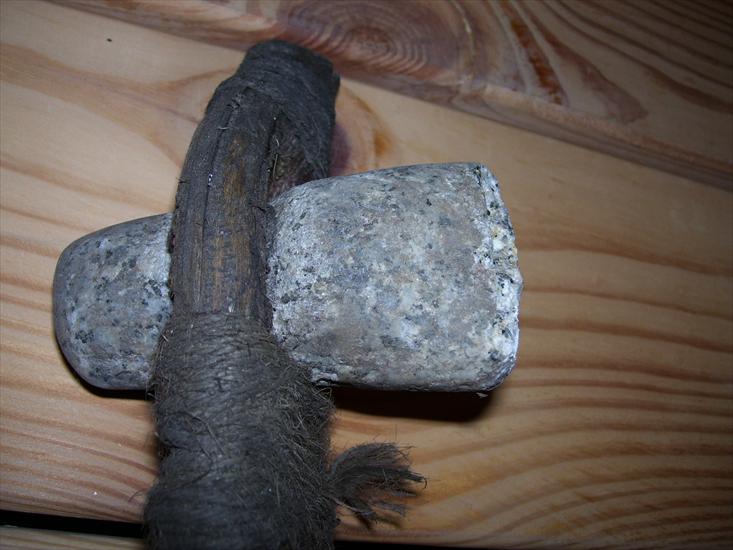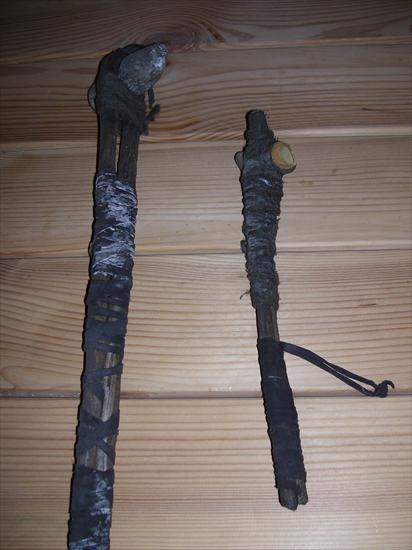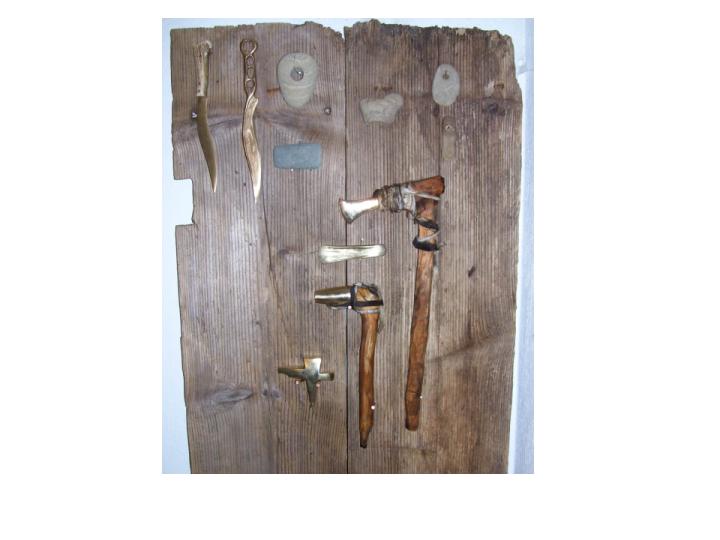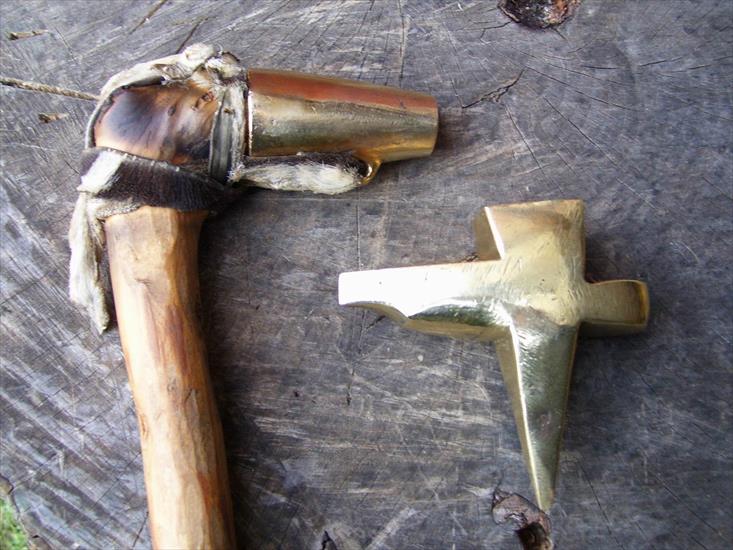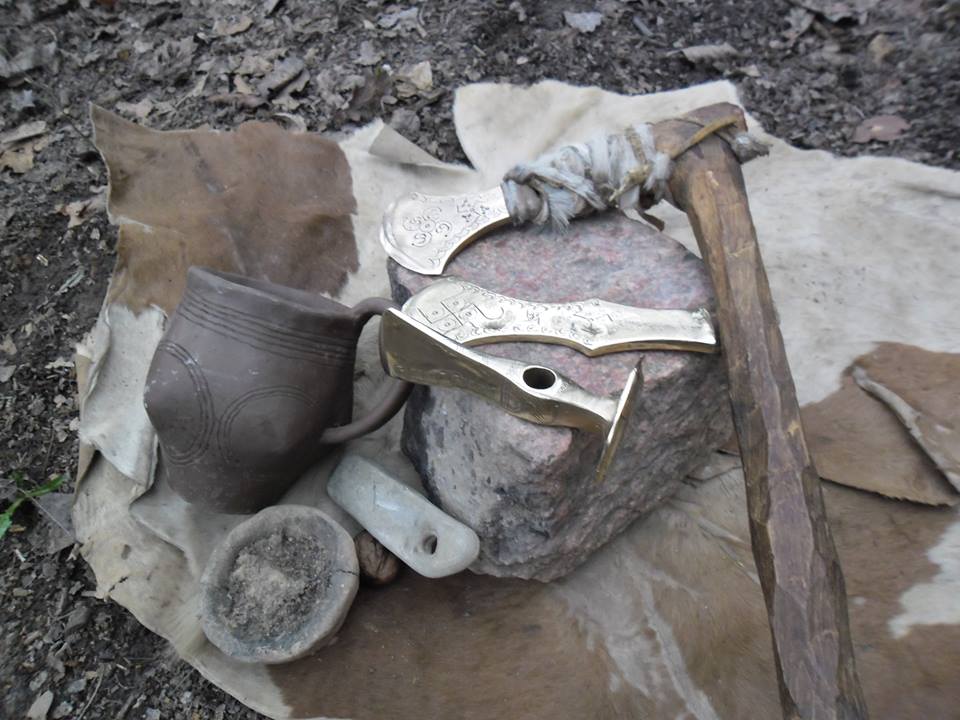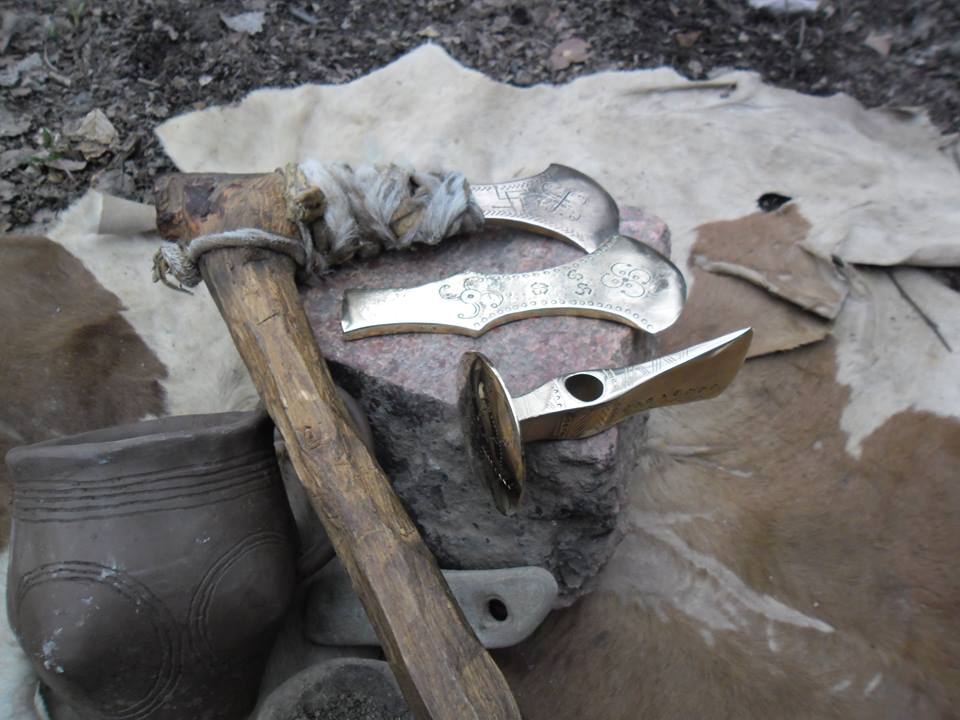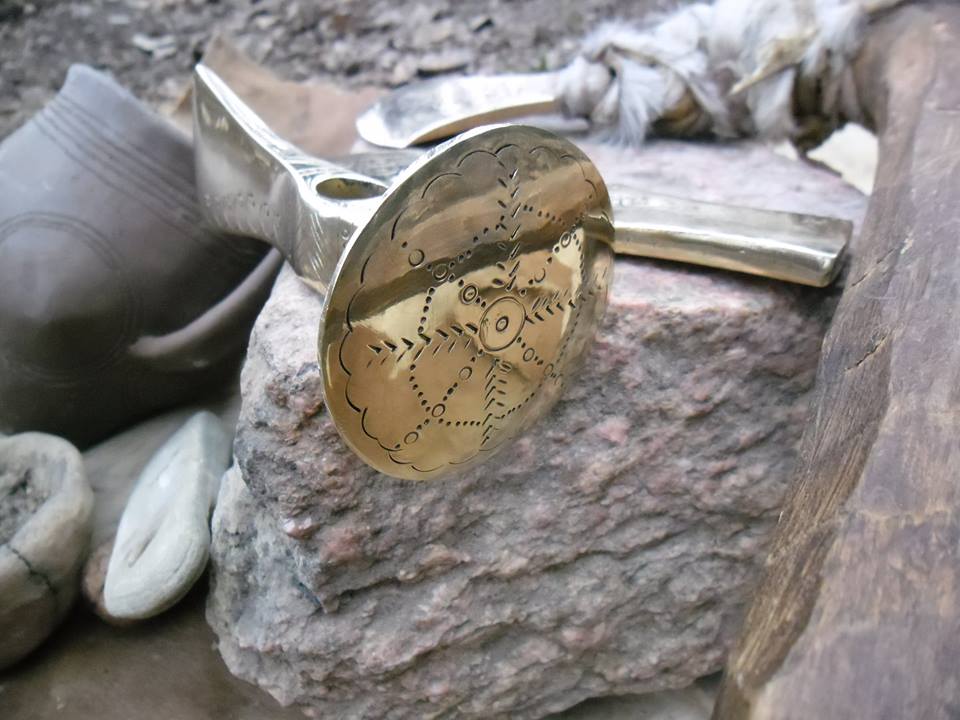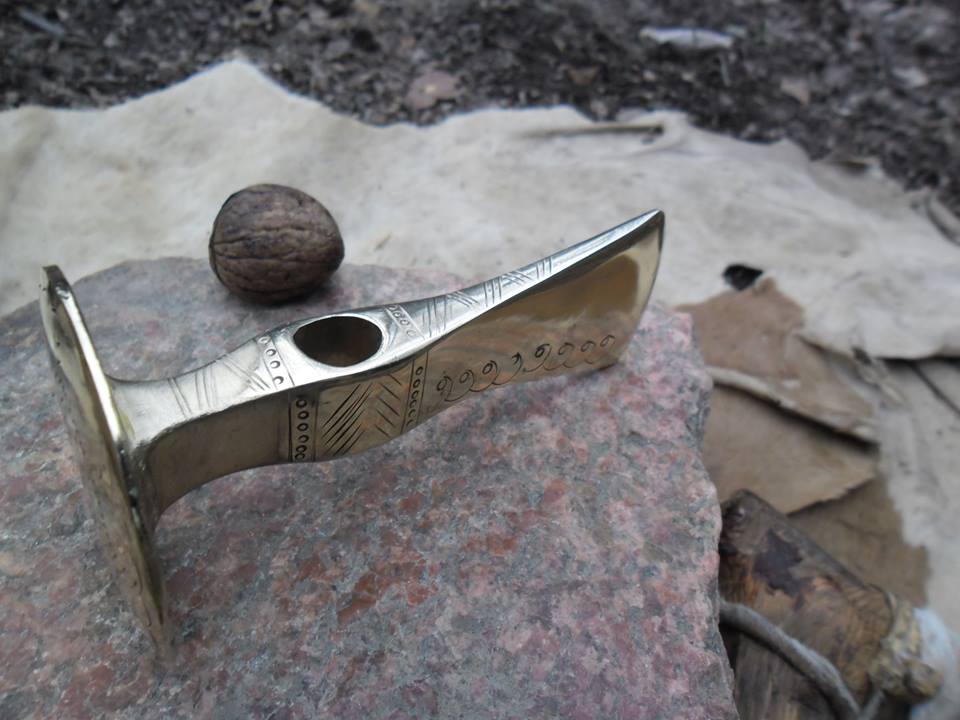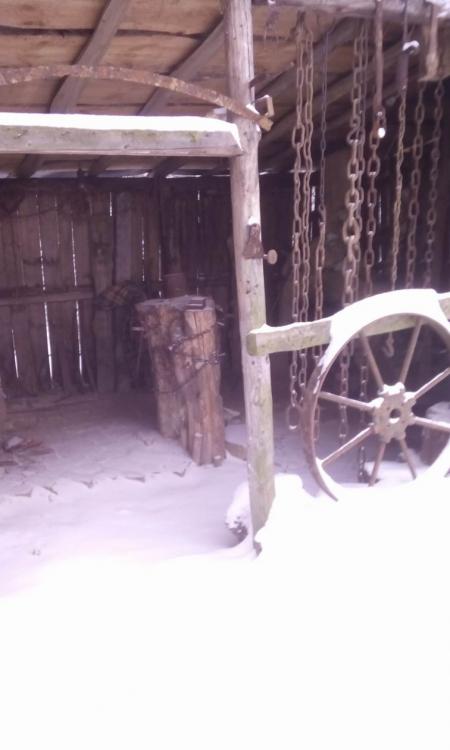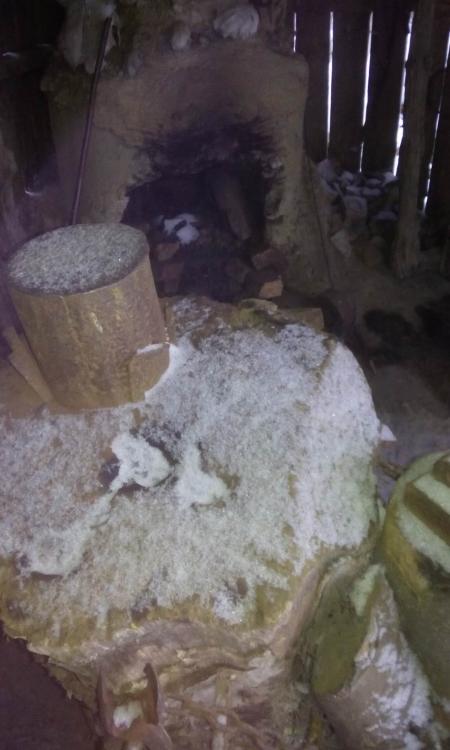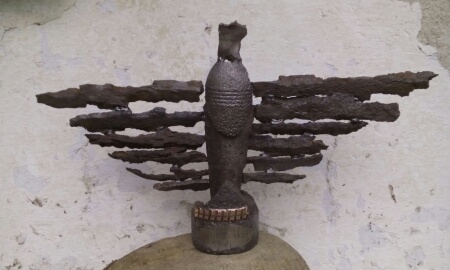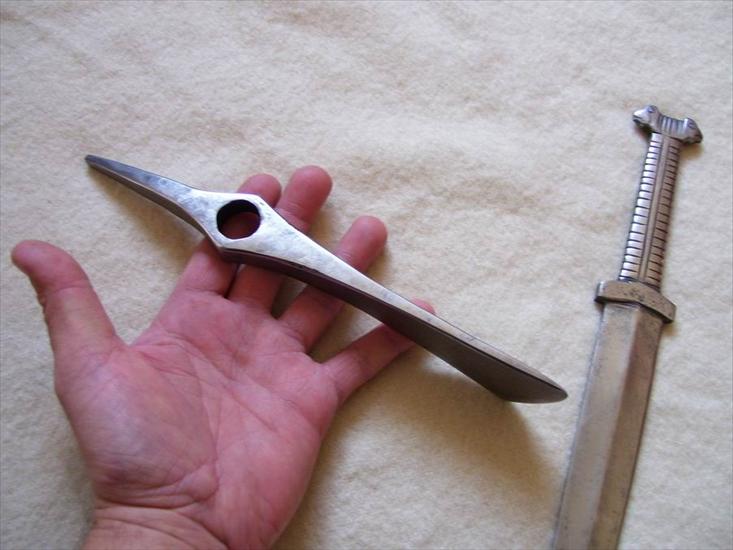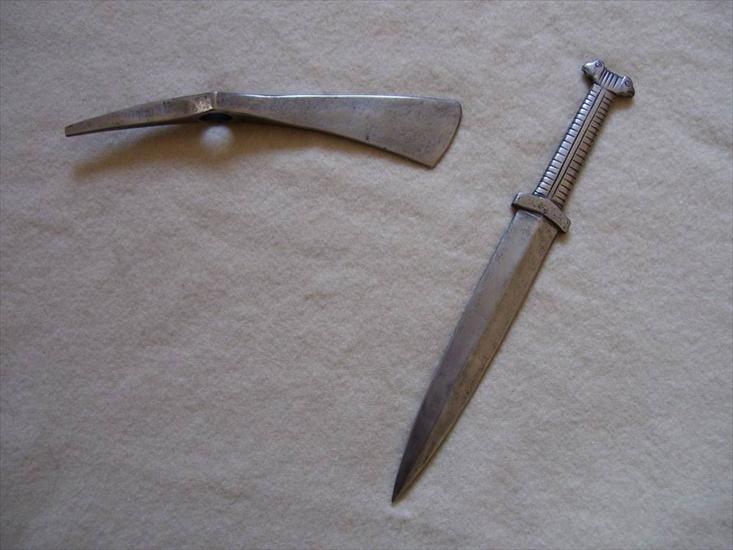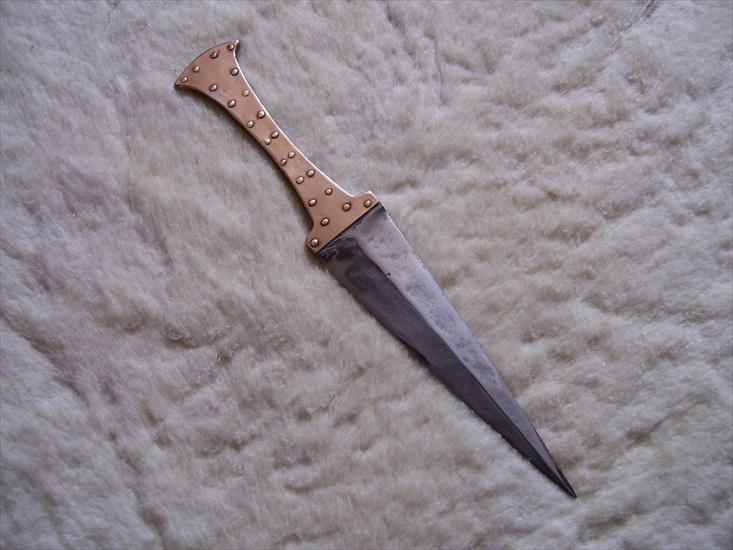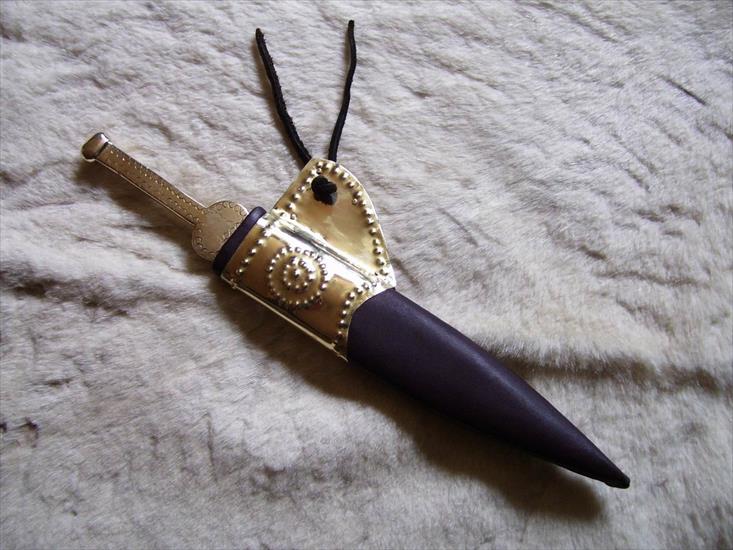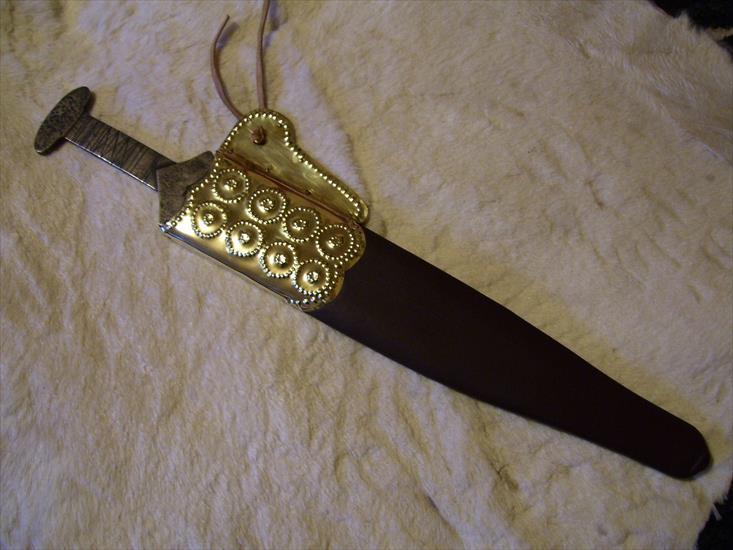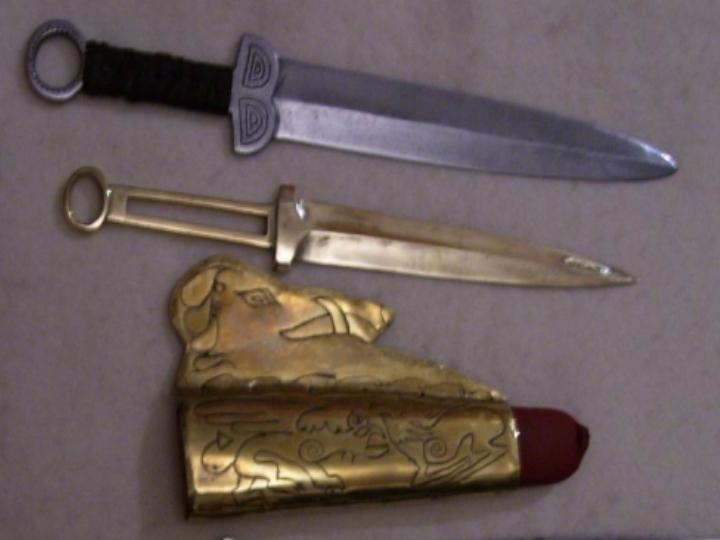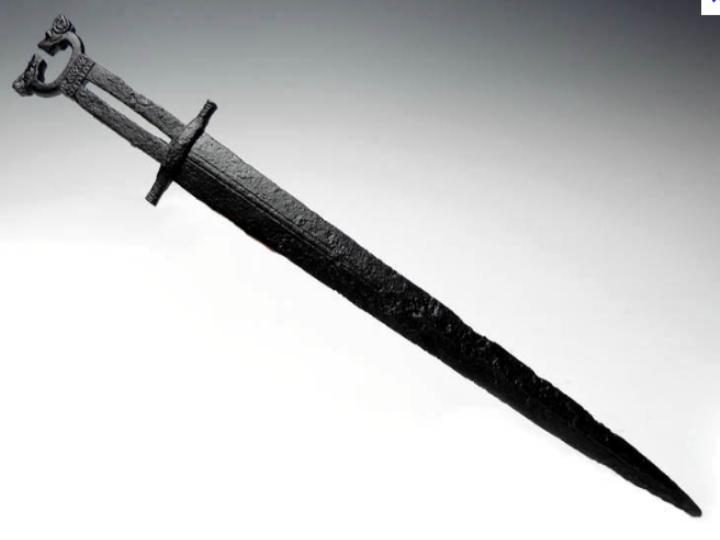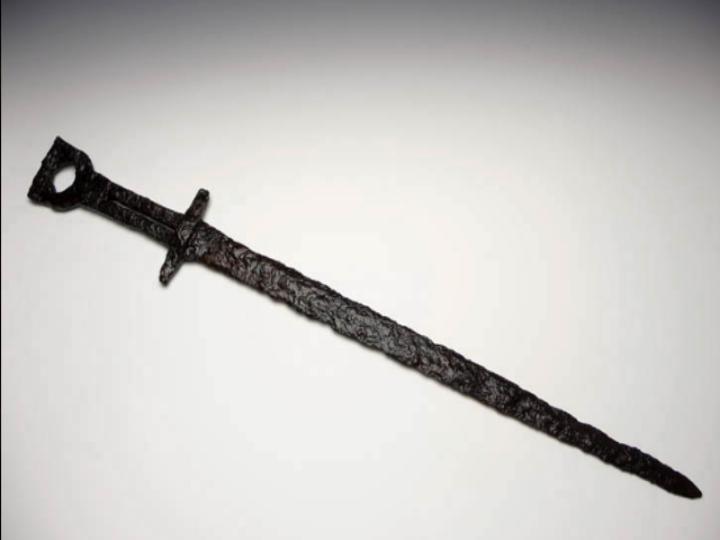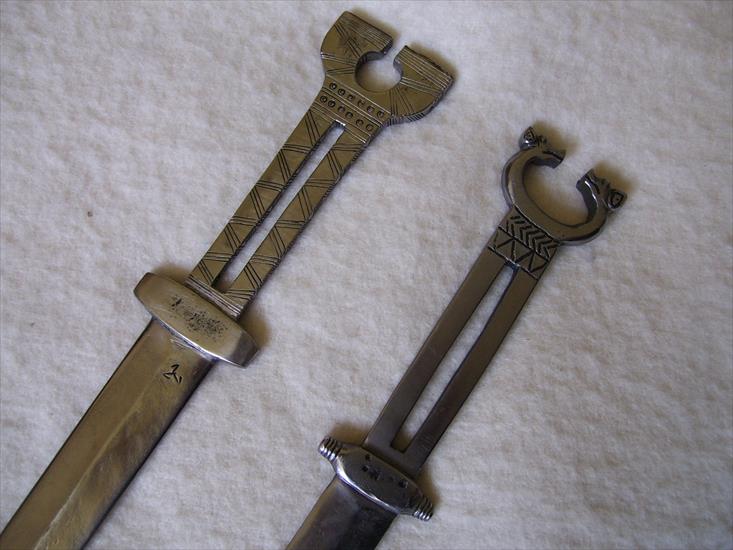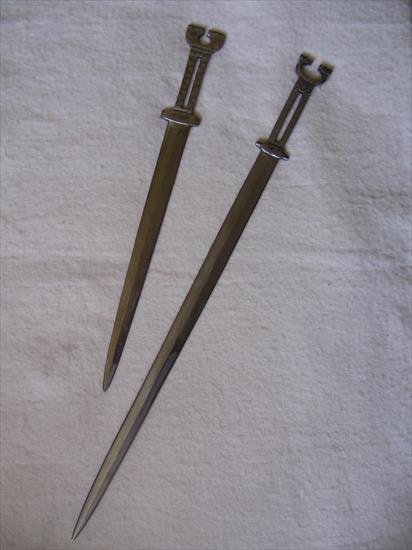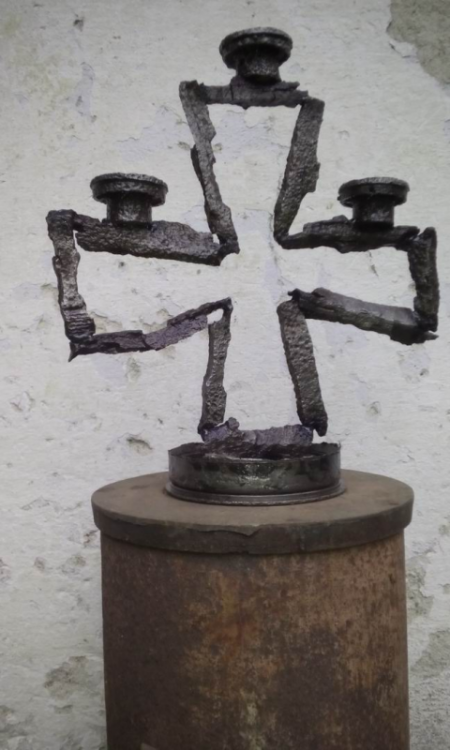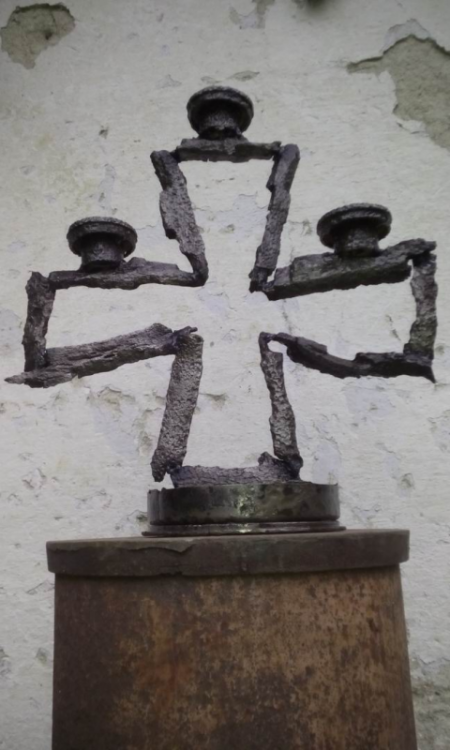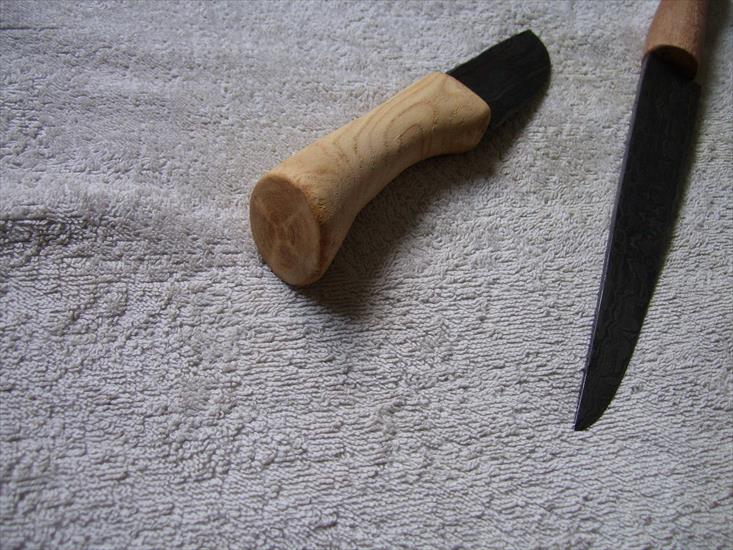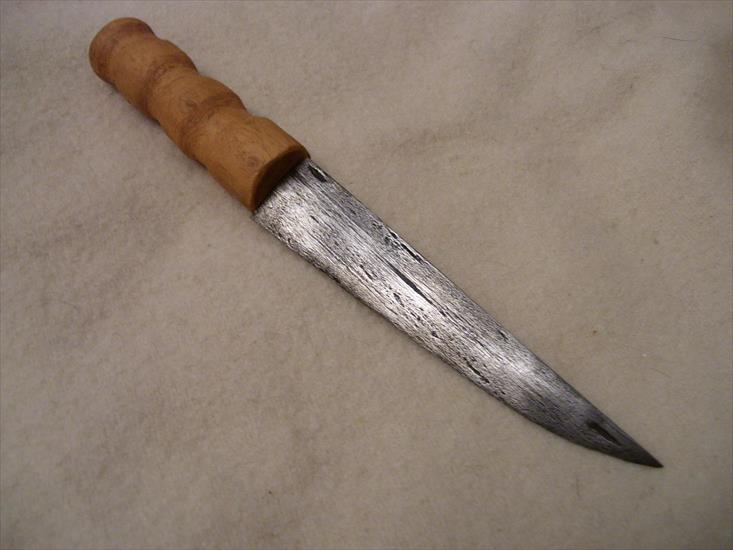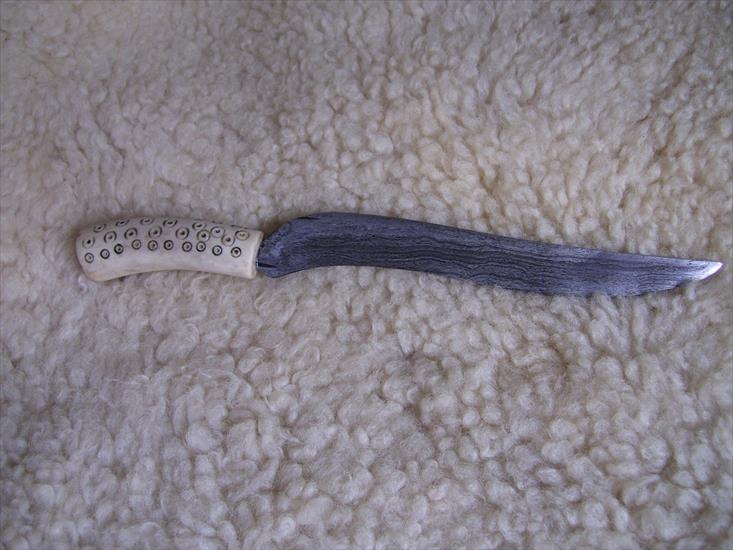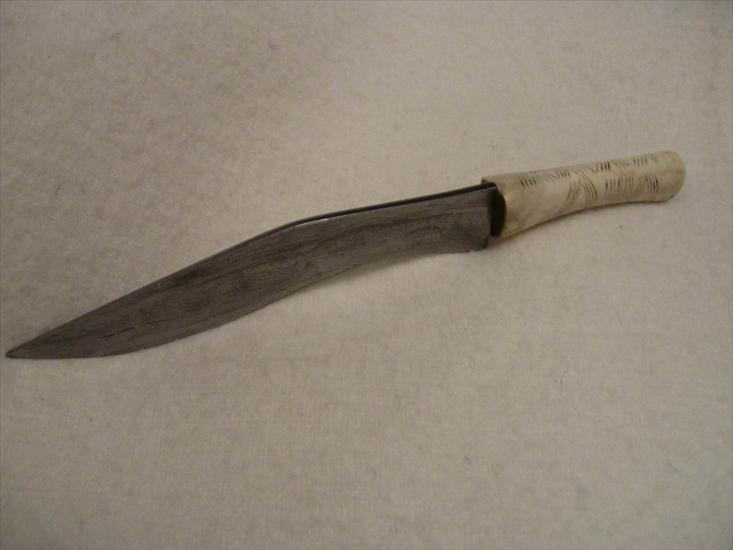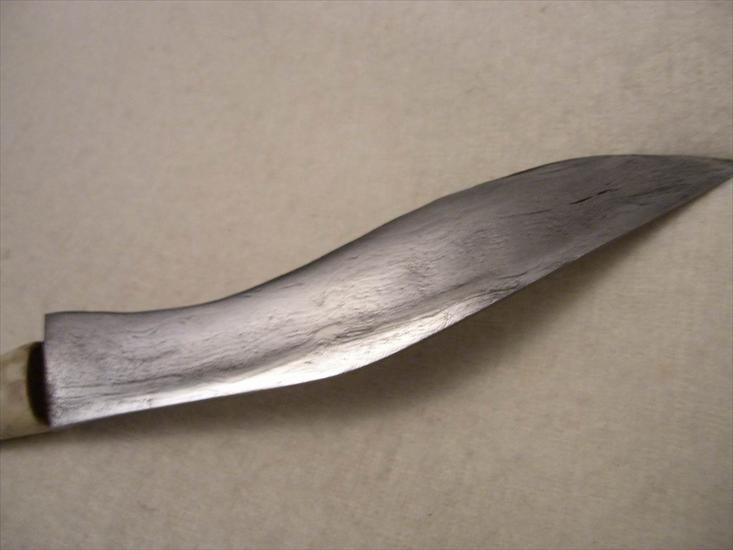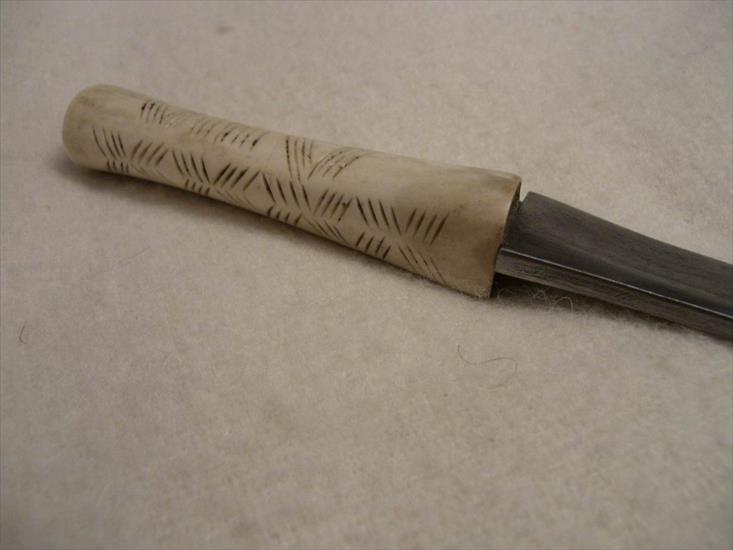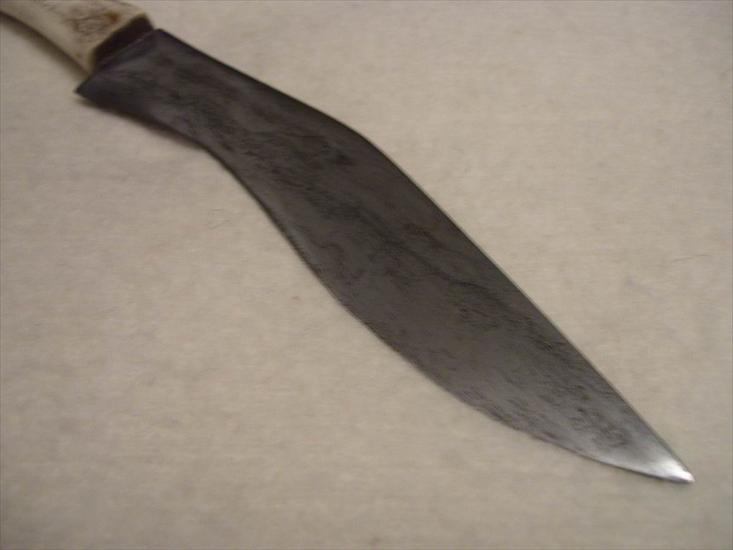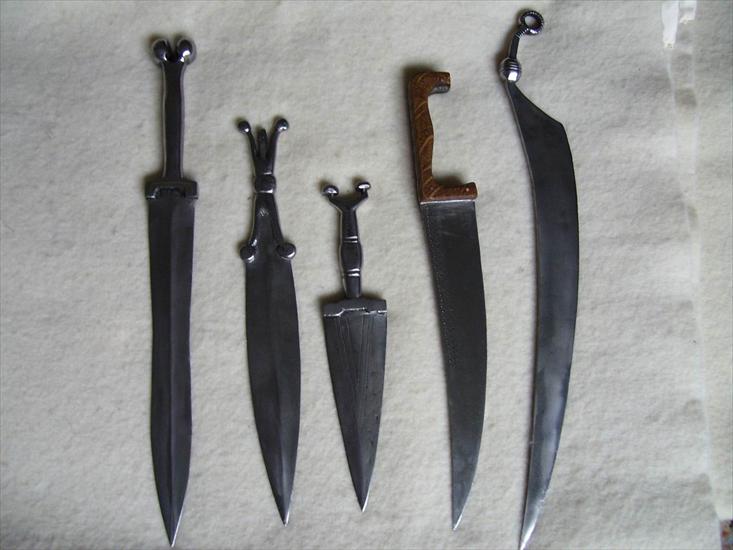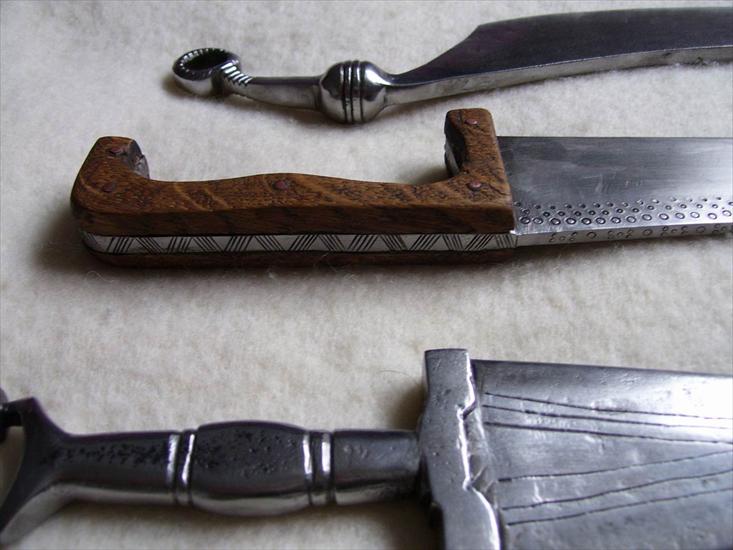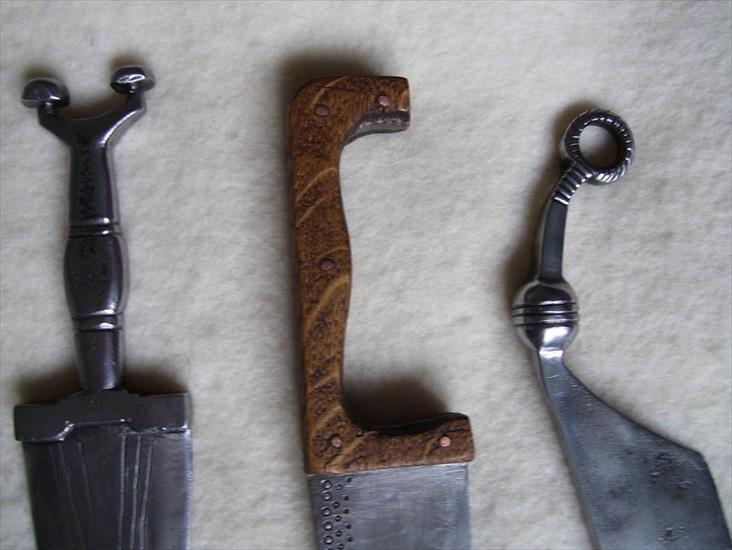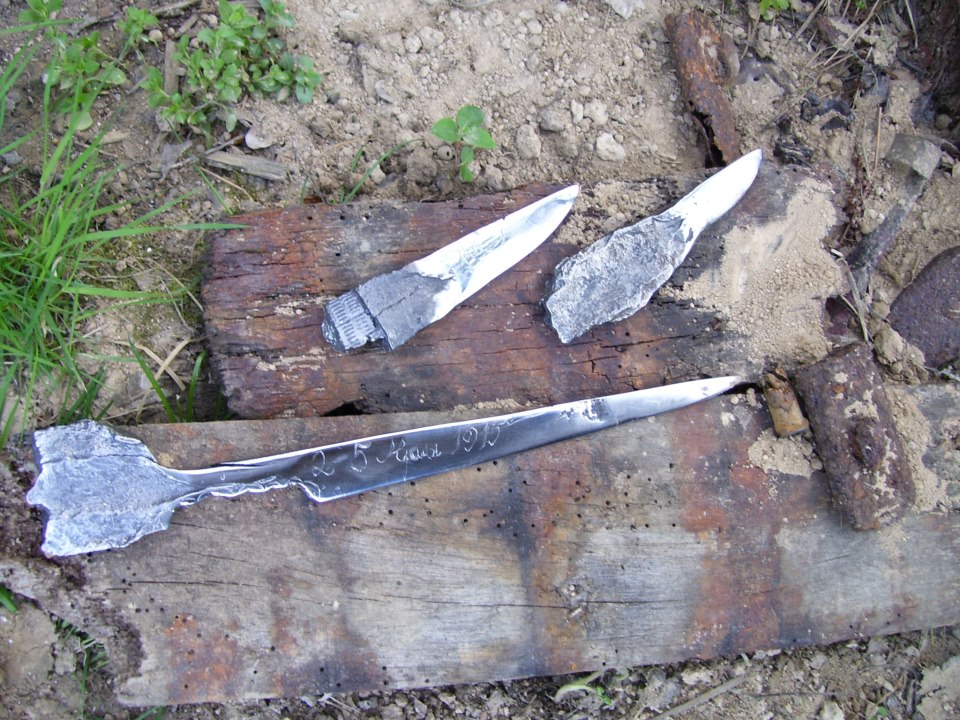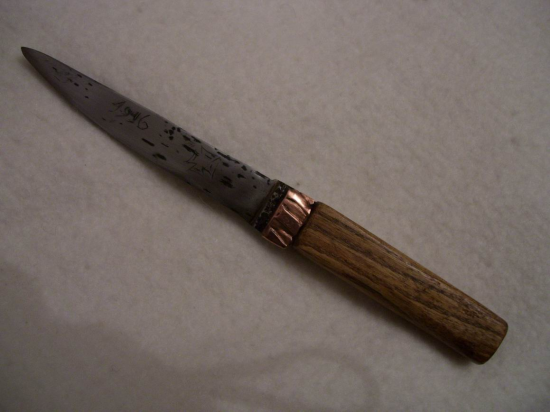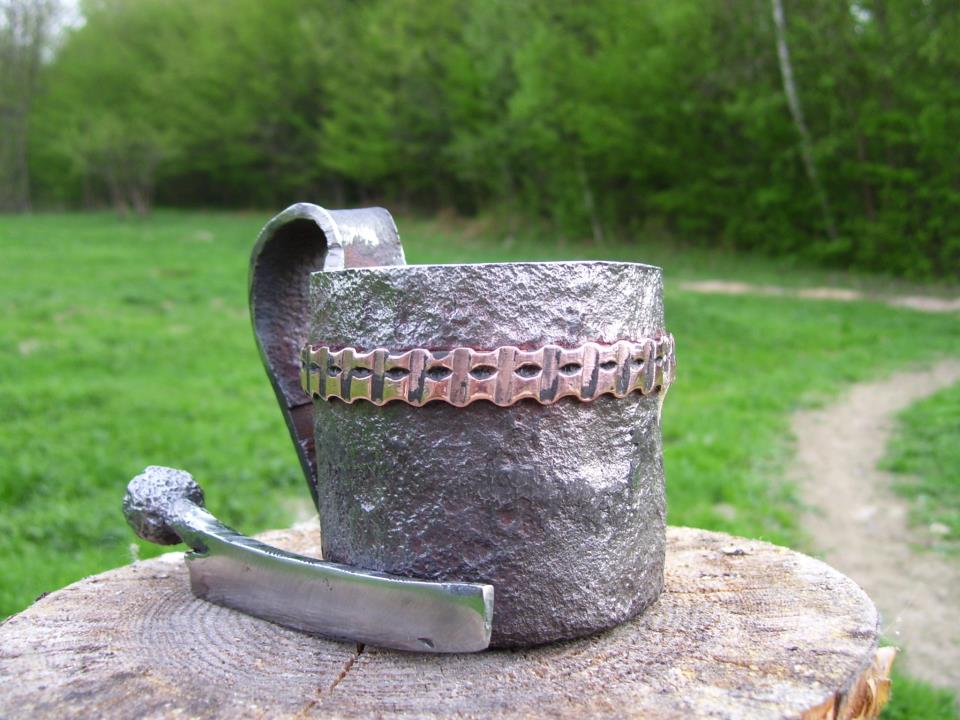
Ibor
Members-
Posts
79 -
Joined
-
Last visited
Content Type
Profiles
Forums
Articles
Gallery
Downloads
Events
Everything posted by Ibor
-
It presents some of my latest works, spears inlaid. Spear 35 cm,widest point of the leaf 4.5 cm, hole 19 mm, weight 310 grams, inlaid with copper. Dagger 36.5 cm, weight 320 grams, hand-decorated. Spear based on boggy finds from the north of Europe, dated to the first centuries of our era. Iron + tin bronze + copper/ Total length 32 cm, widest point 4.7 cm, hole 23 mm, weight 300 gram. Celtic ... or ... Germanic spear, inlaid with tin bronze and copper. Total length 330 mm, width at widest point 57 mm, hole 22 mm, weight 360 grams.
-
He deals with reconstructive archeology and I have periods that I do things only with iron ... and at other times with bronze. Now, I'm dominated by bronze. Here are a few and them. Dagger, knife and two pins, reconstructions from the Bronze Age in the Carpathians. Knife 28.5 cm, weight 150 grams. Dagger 37 cm, weight 440 grams. Pin,19 cm, weight 45 grams. He deals with reconstructive archeology and I have periods that I do things only with iron ... and at other times with bronze. Now, I'm dominated by bronze. Here are a few and them. Zoomorphic dagger. Koban culture, 1100 - 400 B.C,Caucasus. Length 30 cm, weight 210 grams. Scythian set. Ax head length 16 cm, weight 235 grams. The length of the whole 56 cm. Tin bronze + wood + boar bristle and horse mane + braided cord made of linen. Knife length 27 cm, weight 170 grams, hand engraving. Bronze Age in Carpathian zone. Two axe,Bronze Age in the Carpathian,1300 B.C. The larger one with round head, 17 cm long, weight 190 grams, smaller, with decorations 13,5 cm, weight 220 grams. Koban culture,axe. Koban culture, 1100 - 400 B.C, ax. Weight 220 grams, head length 14.5 cm, length 66 cm. Hand engraved. Scythian bronze axe. Scythian ax. Head weight 200 grams, length 14 cm. The length of the whole 64 cm. Hand engraved.
-
Last only forest and wild boar, wild boar and forest .... hahahah .. I made three knives: one modeled on finds from swamps of Denmark, Germanic 2nd century AD (next to him too a neolithic vessel made of white granite) and two other knives: one Roman to the fruit, an old iron blade, a brass handle, the other Roman-Thracian mix, a Thracie blade riveted to a Roman brass handle ... and a beard comb from a wild boar bone.
-
Nydam, Illerup Adal, Vimose....
Ibor replied to Ibor's topic in Spears, Arrows, Pole arms, Mace/hammer etc.
For help I had a man who just does not have this picture ..... Was it thrall or apprentices .. here I do not know .... hahahaha .... -
Nydam, Illerup Adal, Vimose....
Ibor replied to Ibor's topic in Spears, Arrows, Pole arms, Mace/hammer etc.
Thank You guys! This longest, Celtic is 67 cm. Last weekend I was at the ancient "Dymarki Świętokrzyskie". The event concerned the object of iron and steel industry in the early centuries of our era. It is mainly about reconstruction of the process. Spin the charcoal spears in the simplest furnace they could use in those times blacksmiths. Here are some photos .. -
-
Tutorial vid: How to make a javelin head
Ibor replied to Gergely's topic in Spears, Arrows, Pole arms, Mace/hammer etc.
Cool movie. Many different tools use this blacksmith .... I wonder what length has this spear and how much brew? Let me introduce my process of forging a spear or a javelin ... unfortunately for now only photos. When my wife comes back from vacation, I'll make a movie. Recipe for a spear with a " fish bone" after the old. 1.Clear the hearth 2.Start fire 3. Iron rod with a thickness of 2.2 cm infuse to flatness at one end 4.The flat end of the mold formed in the sleeve. 5. Move the rod under the "leaf" of the spear 6.profile the leaf on the anvil 7. Apply the leaf in the form of a 5-kilogram hammer 8.Co some time profiling on the anvil Serve your neighbor sharpened on a long wooden pole. Bon Appetit! -
In the last week several new spears and javelins were made. Mostly it is reproductions of Illerup Adal and Nydam, but also Celtic (the little to javelin). I present them. AAA .... I would like to add that I do not use power tools .... no ... I try ... at least. I try to do as much as possible with a hammer and work with a file or a stone, at the end with sandpaper. None of my spears were, and probably will not, but at least welded electrically ....... I have a welder but until today I have not learned ... hahahaha
-
Today such an early medieval cross, Gotland silver I did. It is about 5 cm X 5 cm. I used the simplest methods that blacksmiths could use in the early Middle Ages: a sandstone form ... simply a circle, a crucible made of clay mixed with crushed granite, burned in the sun then in fire (withstand about three castings). I cast a silver disc, without high temperature tempering, then cut the shapes with the chisel and finally finished the file. Then I dug the decoration. I chopped it cold and then at a high temperature and hand-made with an iron spike I punched in it and in the cross a rivet hole (I did not drill with a drill). I realized ... and ready.
-
Such a "stand" under good drink ... in the shape of early medieval warrior. I made it from the debris of the first war with shrapnel. Height 40 cm, weight 15 kg
-
Bronze Age and early Iron, tools, techniques, and materials.
Ibor replied to Ibor's topic in Historical Blades
Two ax hammers. I did it with black granite originating in the Republic of South Africa. The larger is 15 cm long and weighs 400 grams,17 mm hole. Second, smaller,220 grams and 15.05 cm in length, it has a hole of about 17 mm. Now I bought the so-called Swedish granite" Vanga" is red and I will try to do more. -
Bronze Age and early Iron, tools, techniques, and materials.
Ibor replied to Ibor's topic in Historical Blades
And here, an example of mounting a hammer made of granite. Branch hazel, goat leather and granite. This smaller hammer is made of sandstone. Both quickly consume, but for this type of attachment you do not need profiling stone. On the blackboard with wood hammer and anvil from the Bronze Age on the basis of European discoveries .... except the Netherlands and France in 1100 B.C - 800 B.C And hatchet flat and the manner of its attachment, and two knives from the Polish one in the frame of the antlers. -
Bronze Age and early Iron, tools, techniques, and materials.
Ibor replied to Ibor's topic in Historical Blades
Flat ax with ornaments dating from 1100 B.C. Ax with a circular floored, culture barrow graves in 1700 B.C-1300B.C. Central Europe. Small casserole is molded out of clay mixed with sand. I used this type of crucibles for casting small things, such bracelets or blade daggers. Mostly they stand 1 to 2 casts .... but there is no trouble in the summer because I've done dozens of them. Then the production of the pedal; I used of broken, cracked ground shells crucibles. The photo is a sandstone with a hole, it is a whetstone to sharpen knives, sickles ... but also great that sandstone is machined bronze, especially kneading dents. -
-
Tomas great idea with this soldier !!!!! Think about it, thank you !!!! I'm not moving misfires and everything that looks suspicious. Gentlemen, thank you for your interest in what I am doing ...... because it is important for me ...... I'm doing these things debris to celebrate and give honor Soldier who fought and died, no matter from what country was not matter for which he fought, MAN COUNTS!
-
The autumn of 1944 the Soviet offensive was directed, under the pretext of help uprising in Slovakia, right there, by the Dukla Pass. From dawn on September 8 to November 30, 1944, this area became a place of fights and burial of about 120,000 Soviet troops and about 70,000 German soldiers. Apart from these, there also fought Slovaks, Czechs, Ukrainians and Hungarians. From the debris was from this valley done "Eagle Dukla" Height 40 cm, a wingspan of 60 cm, weight 12 kilos.
-
Iron + bronze + copper + wood + leather The last two short swords - a long sword with a zoomorphic head is 64 cm, weight 410 grams. Shorter measures 46 cm and 310 grams of brews.
-
-
A few blades of iron fiber old. Handles are made of oak, acacia and sycamore and wild boar bones and antlers.
-
Thanks Tomas
-
WOWWW ......Grasshopper ..... GREAT !!!!
-
The first short sword - dagger and a third dagger is Celtiberians of today's Spain, the last two combat knives are Celts from Europe, the period of La Tene. The one with the ball and a ring on the head is my favorite weapon ... such an awful knives I like and occur in such a style just for them! Dagger hilt anthropomorphic is probably from the British Isles, a Celtic.
-
There is no trouble, and I thank You for Your kind welcome to the Forum!
-
And here are some knives with shrapnel missiles ........and a small knife with a bolt from the lock Mauser K98 (at this cup)
-
Teddy Bear is beautiful !!!
